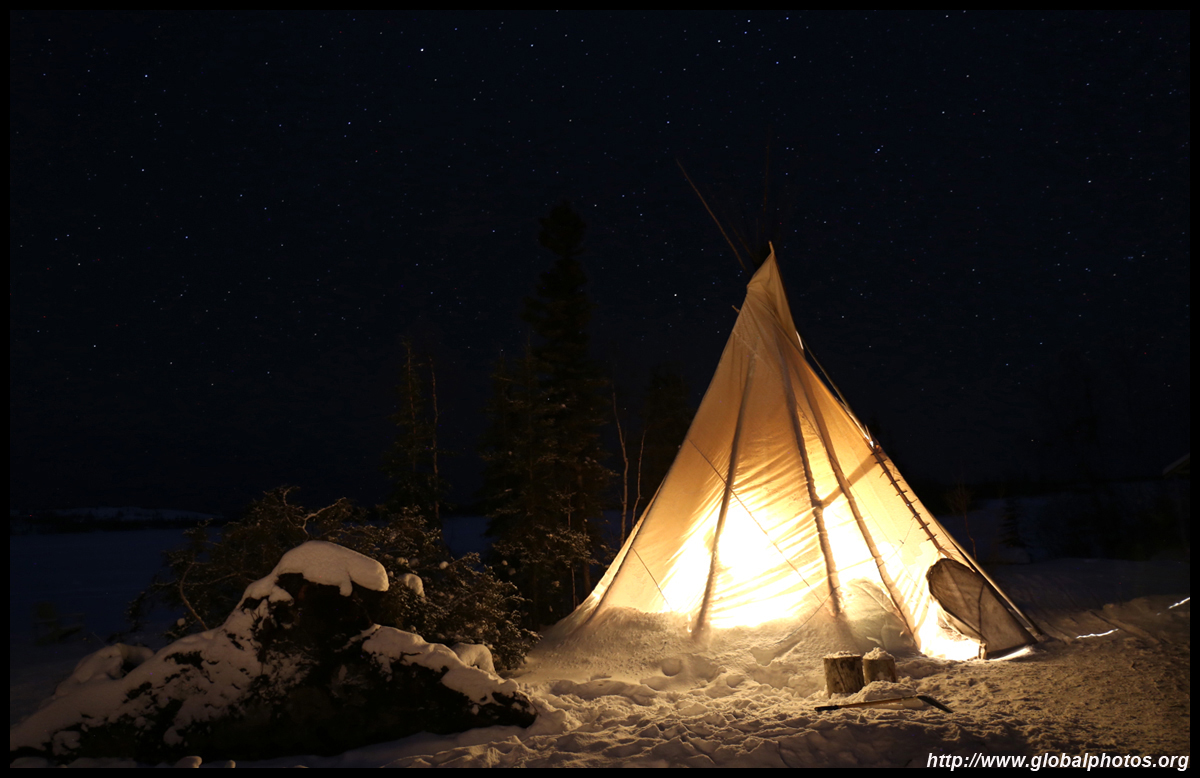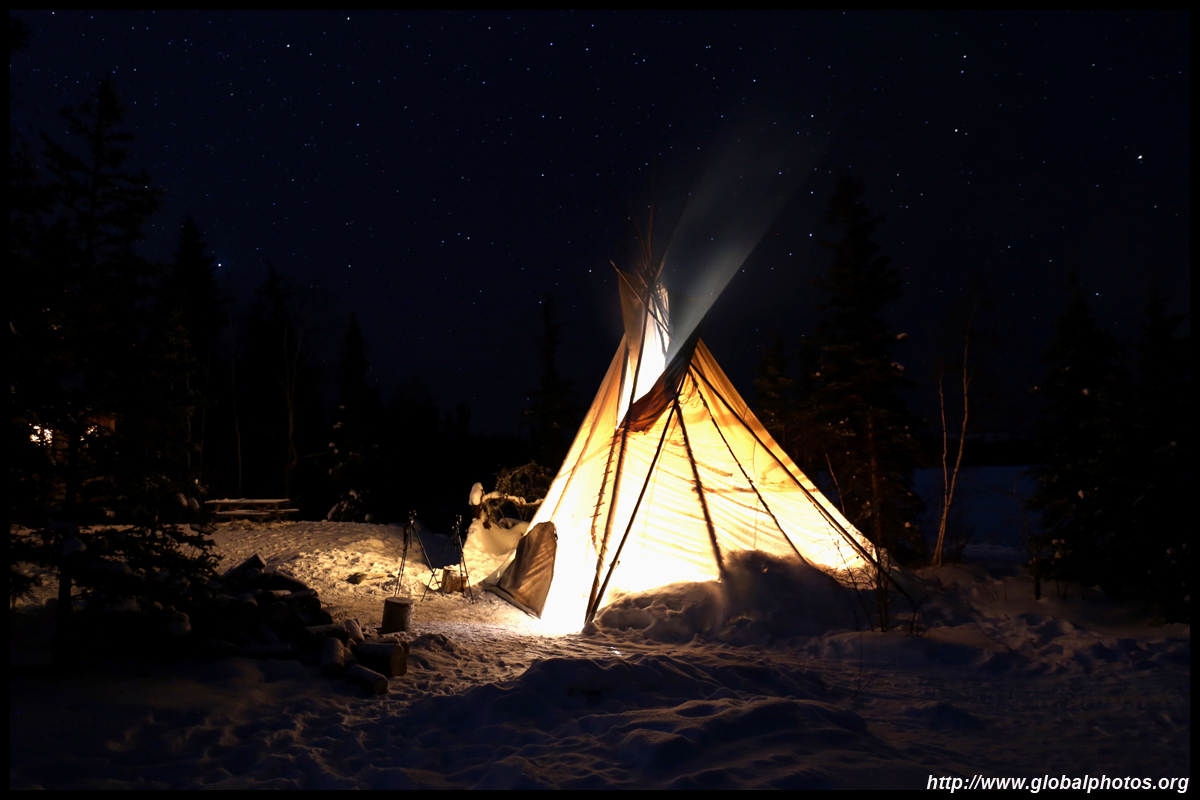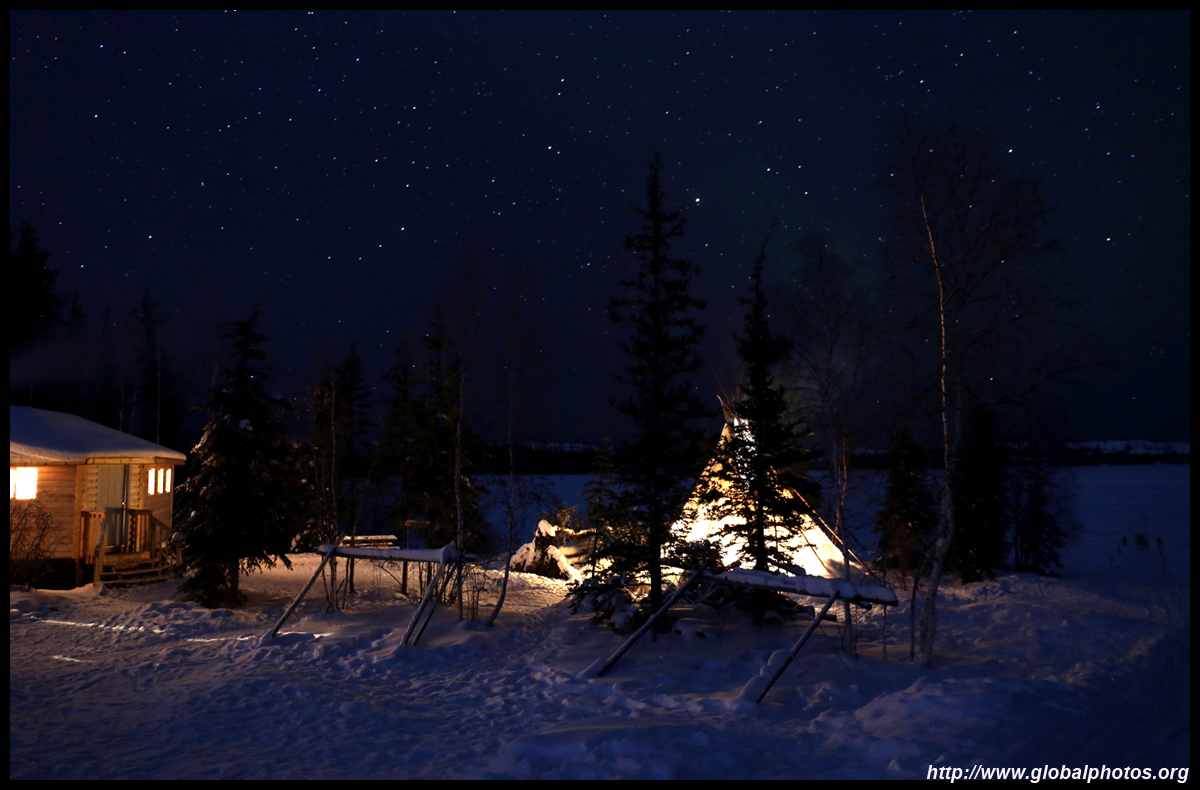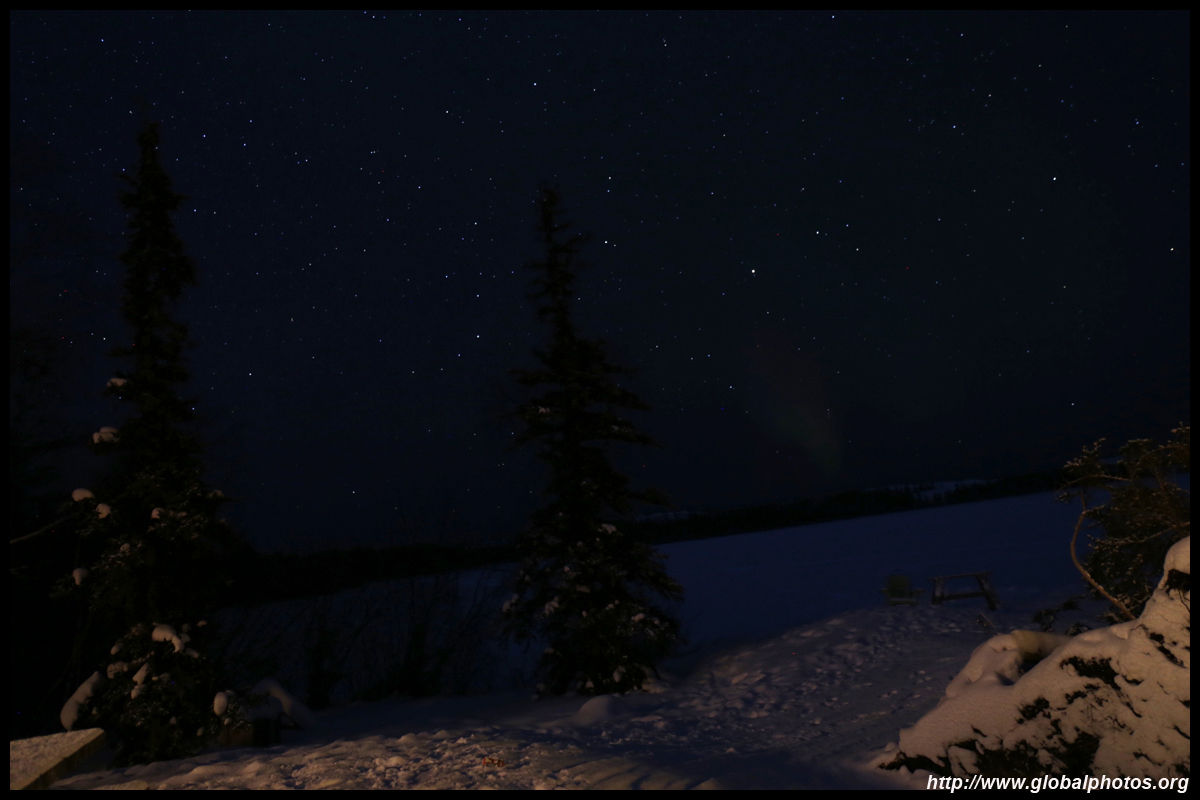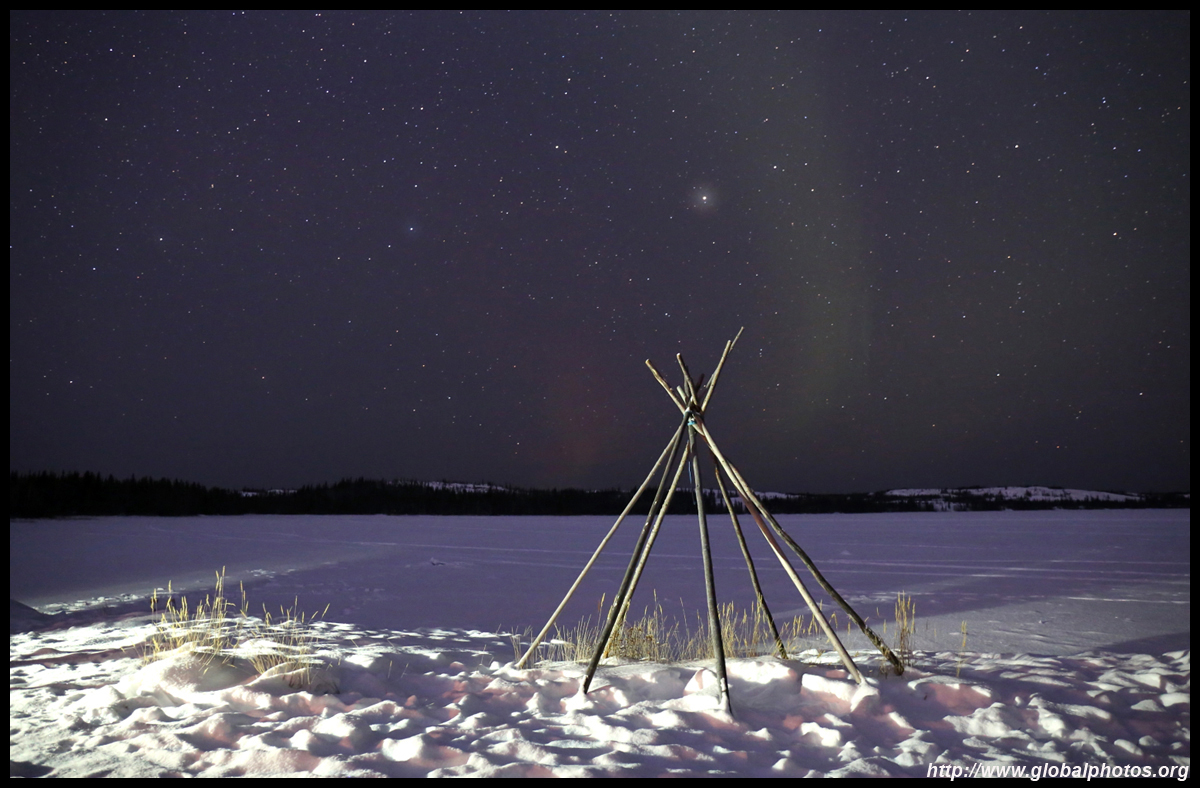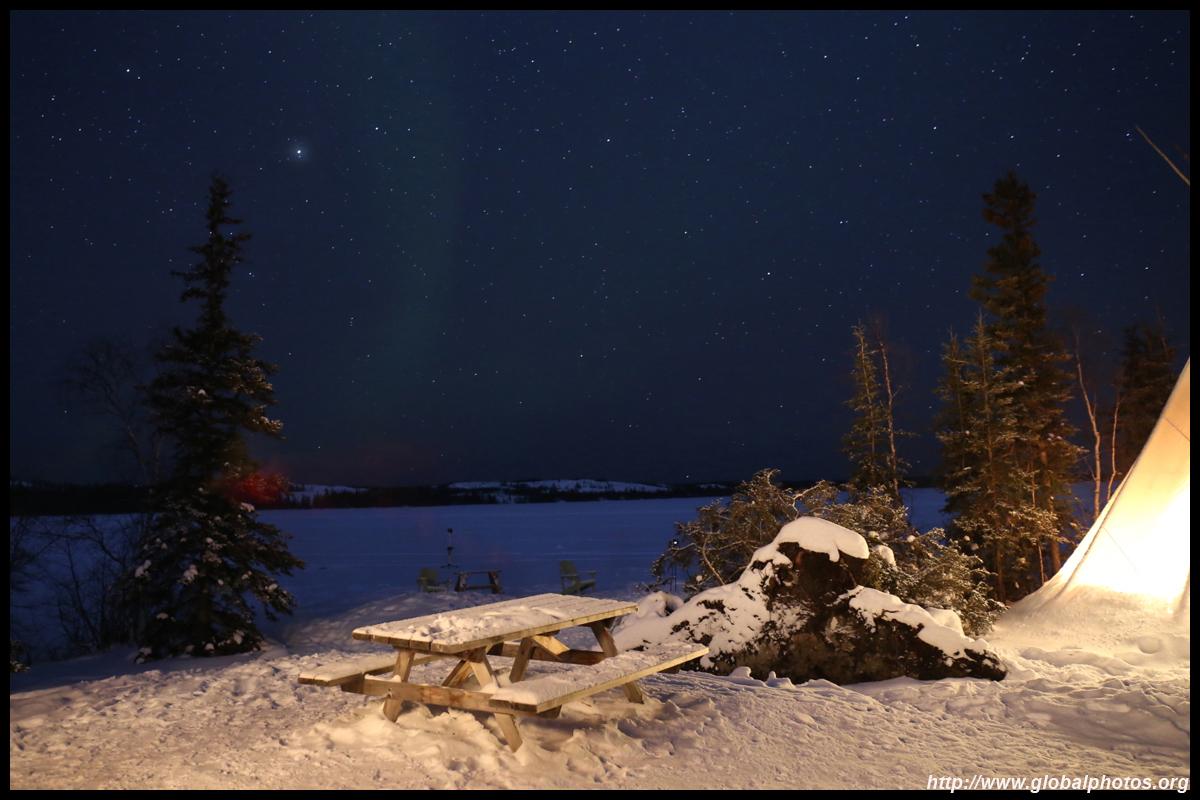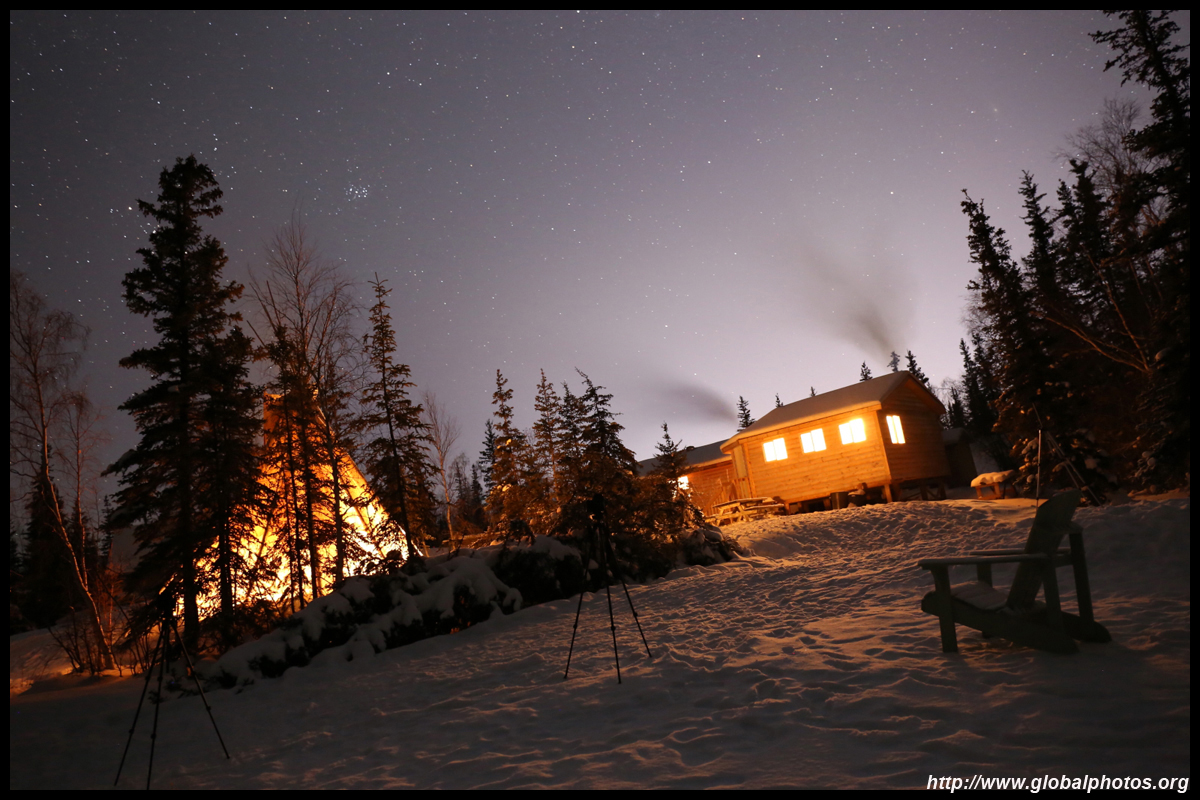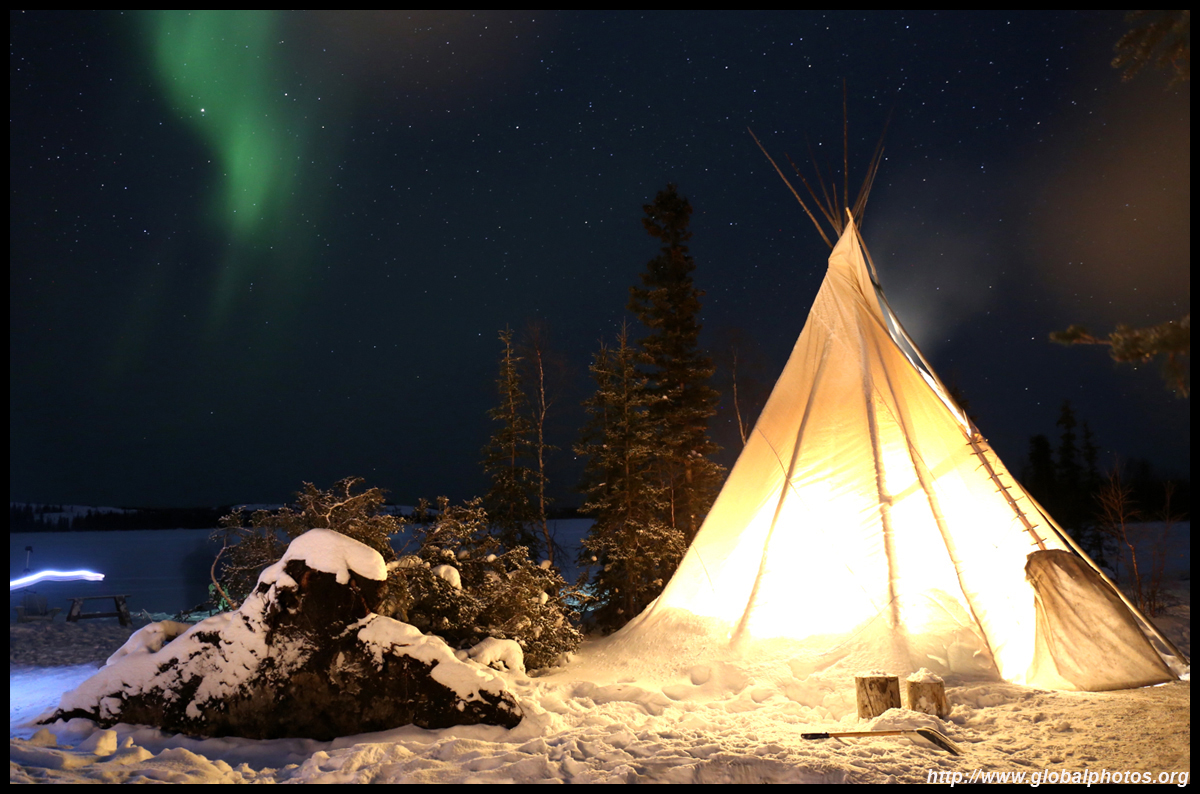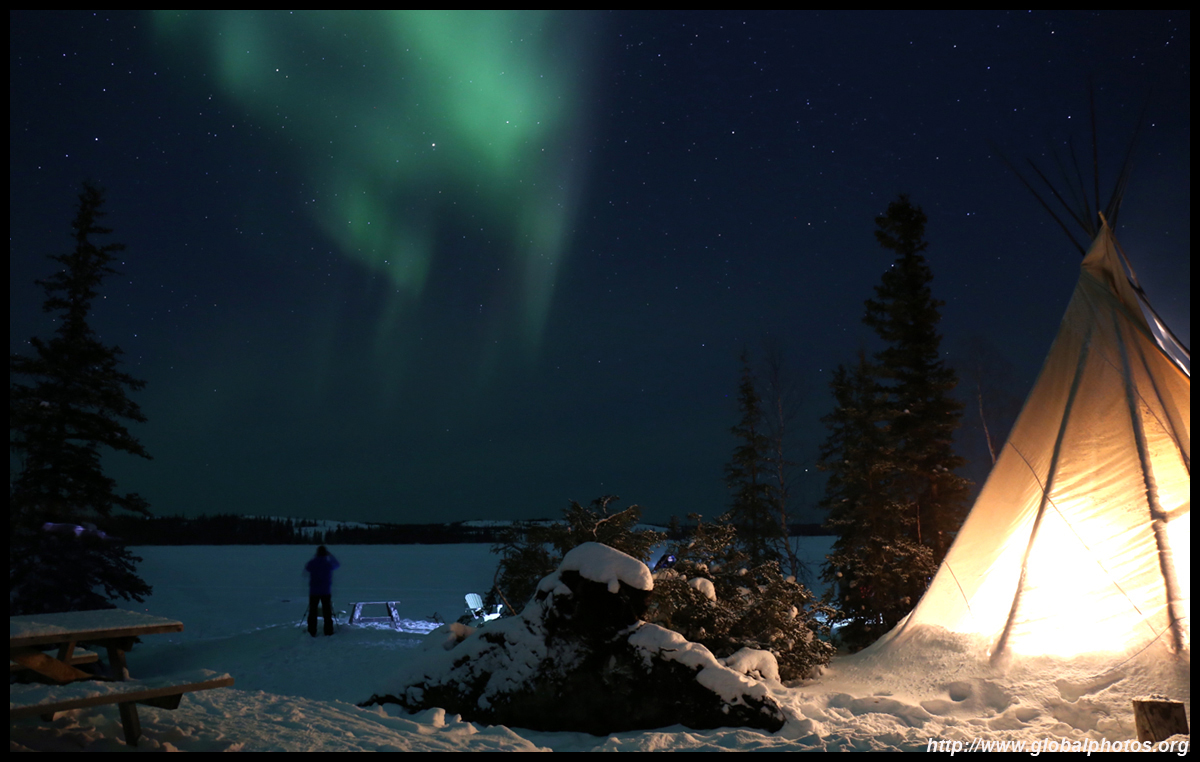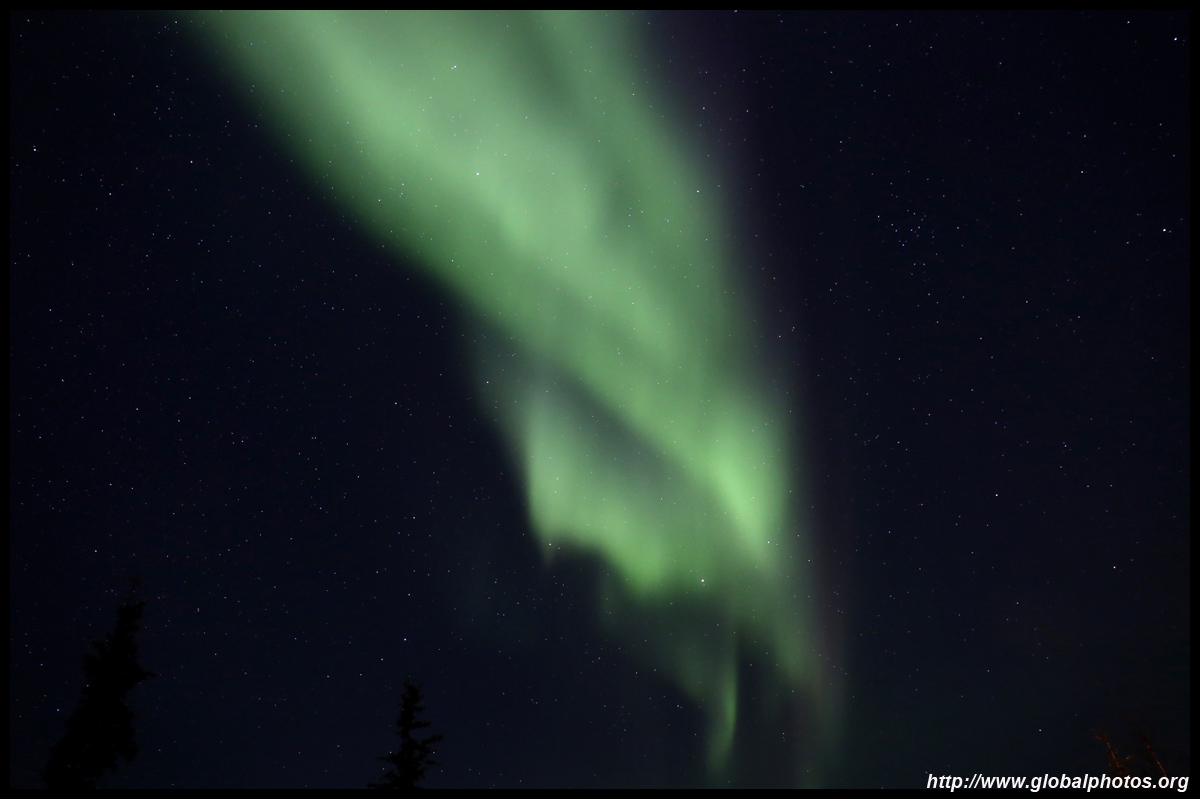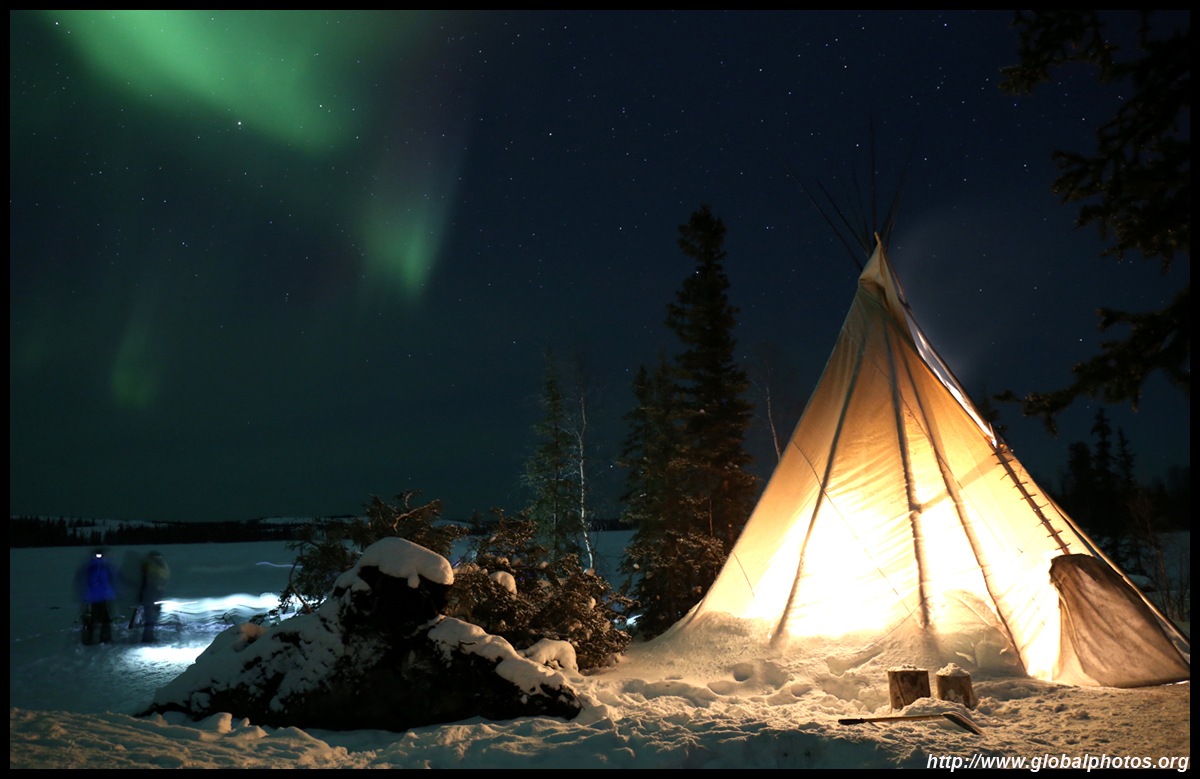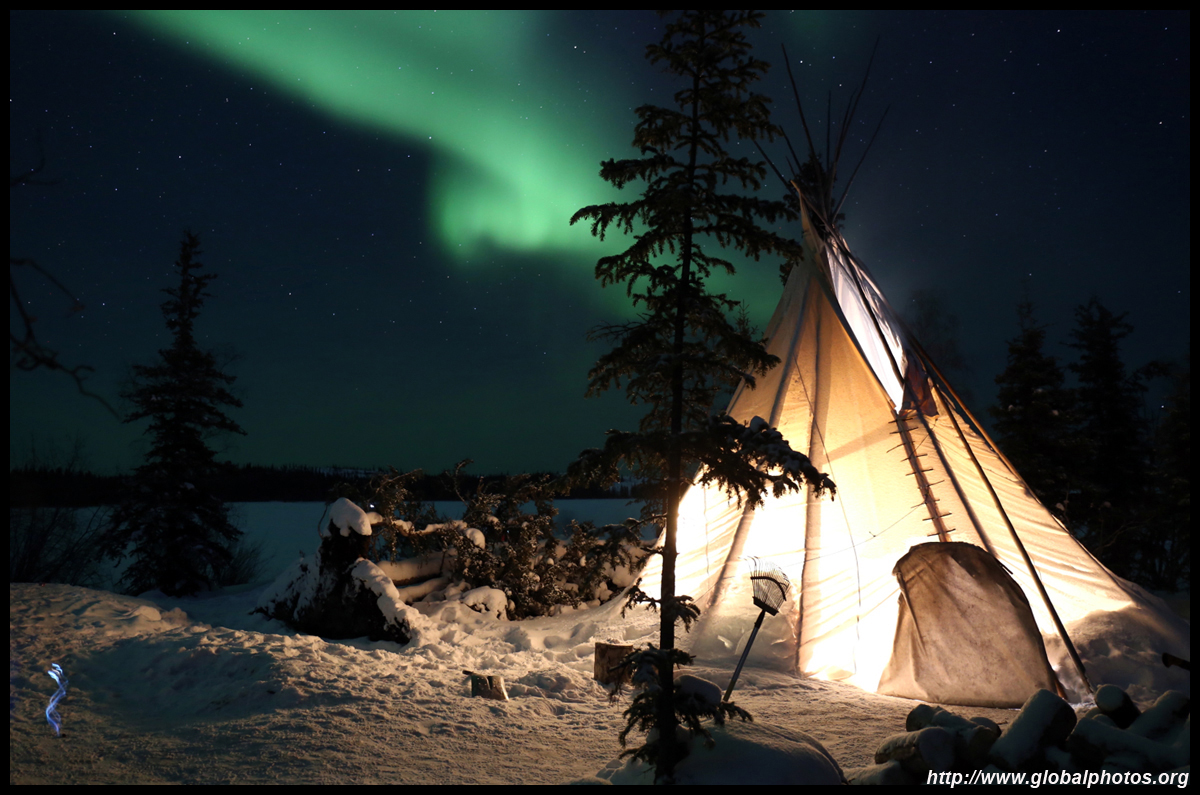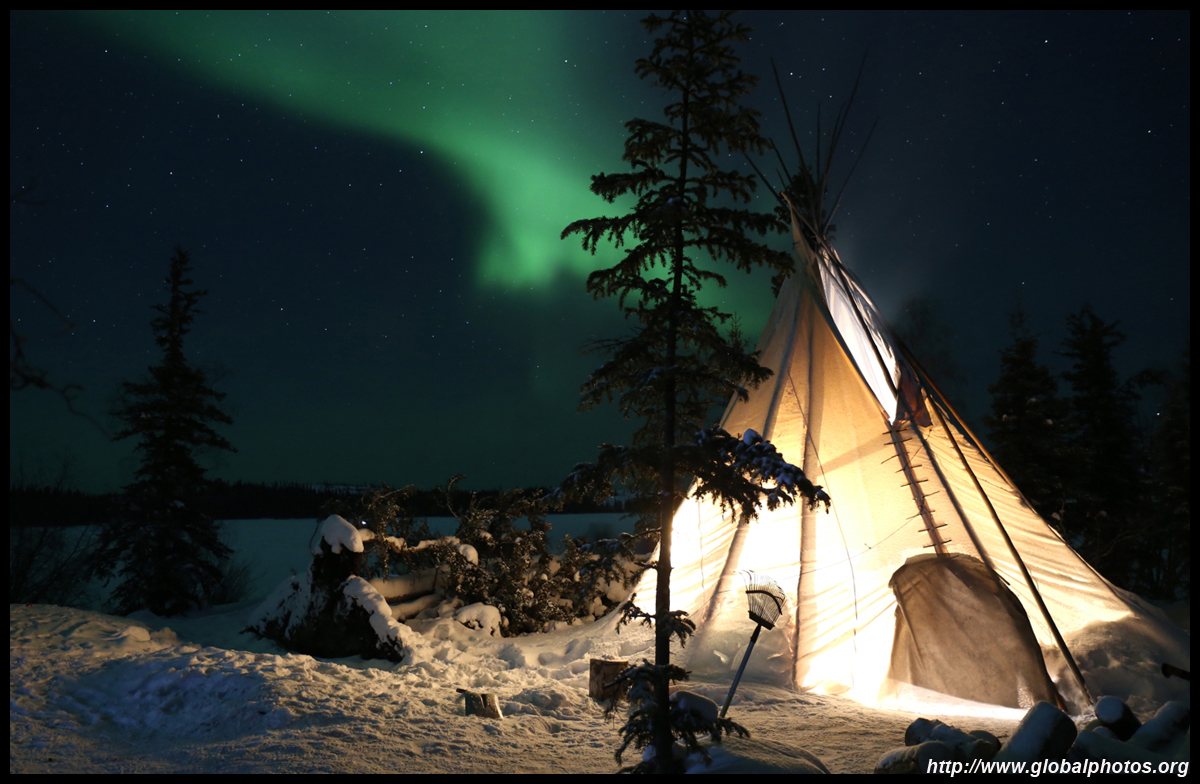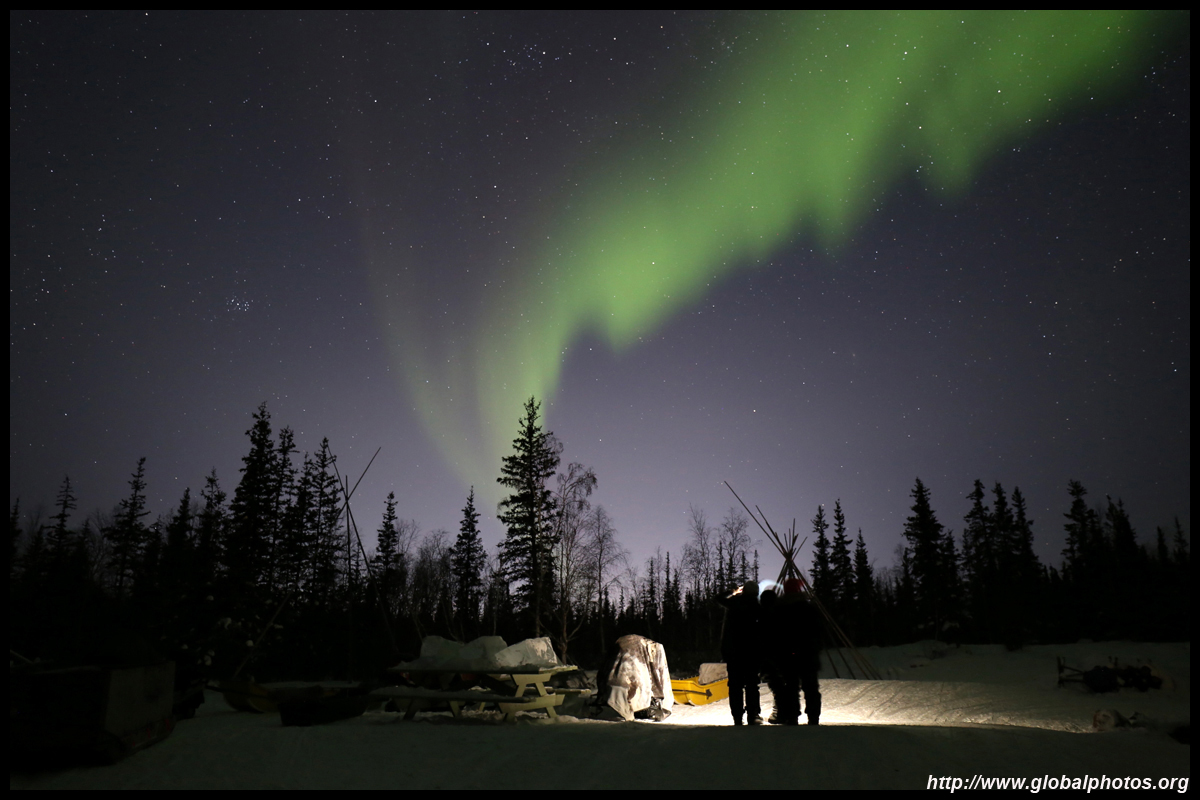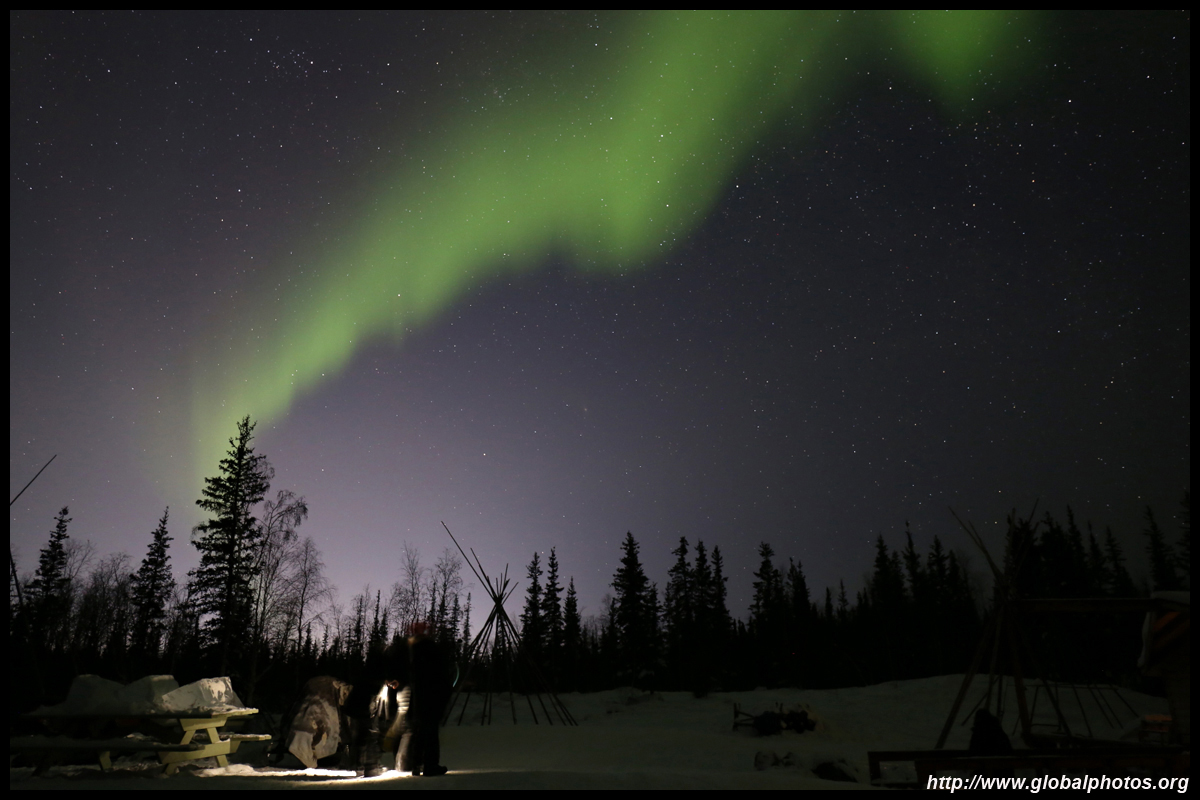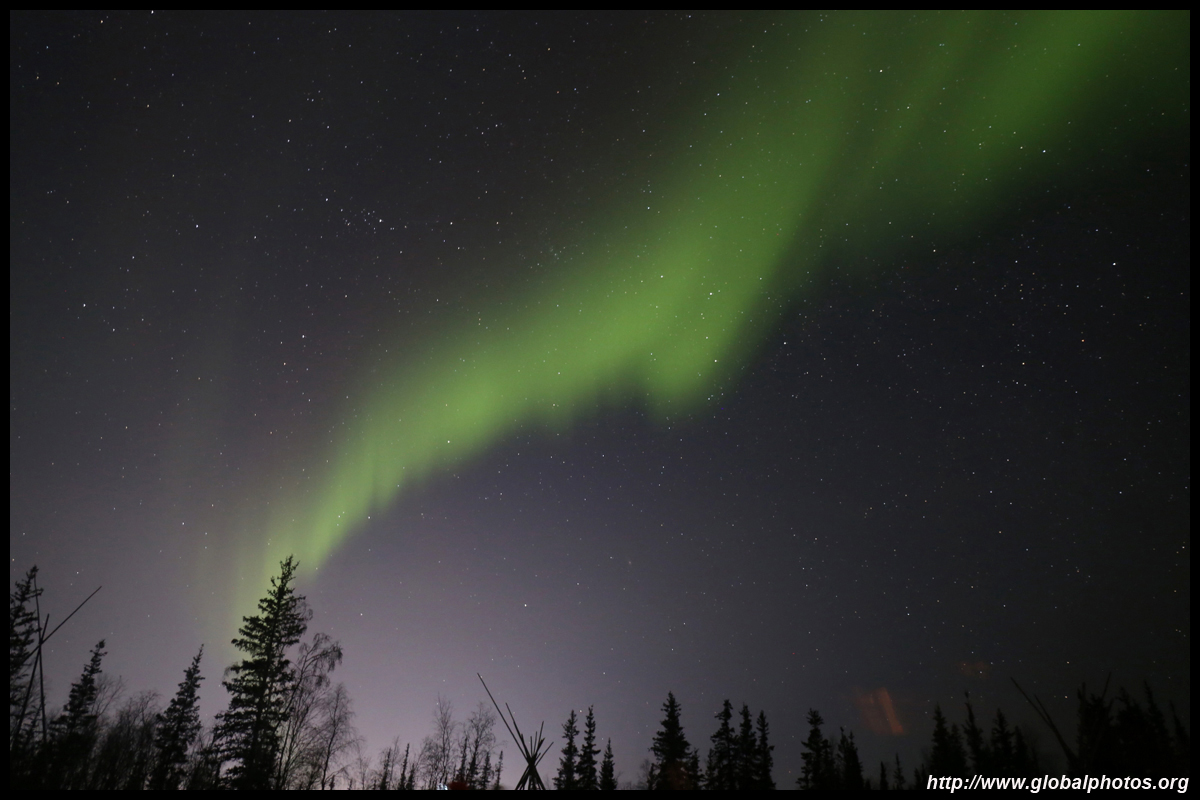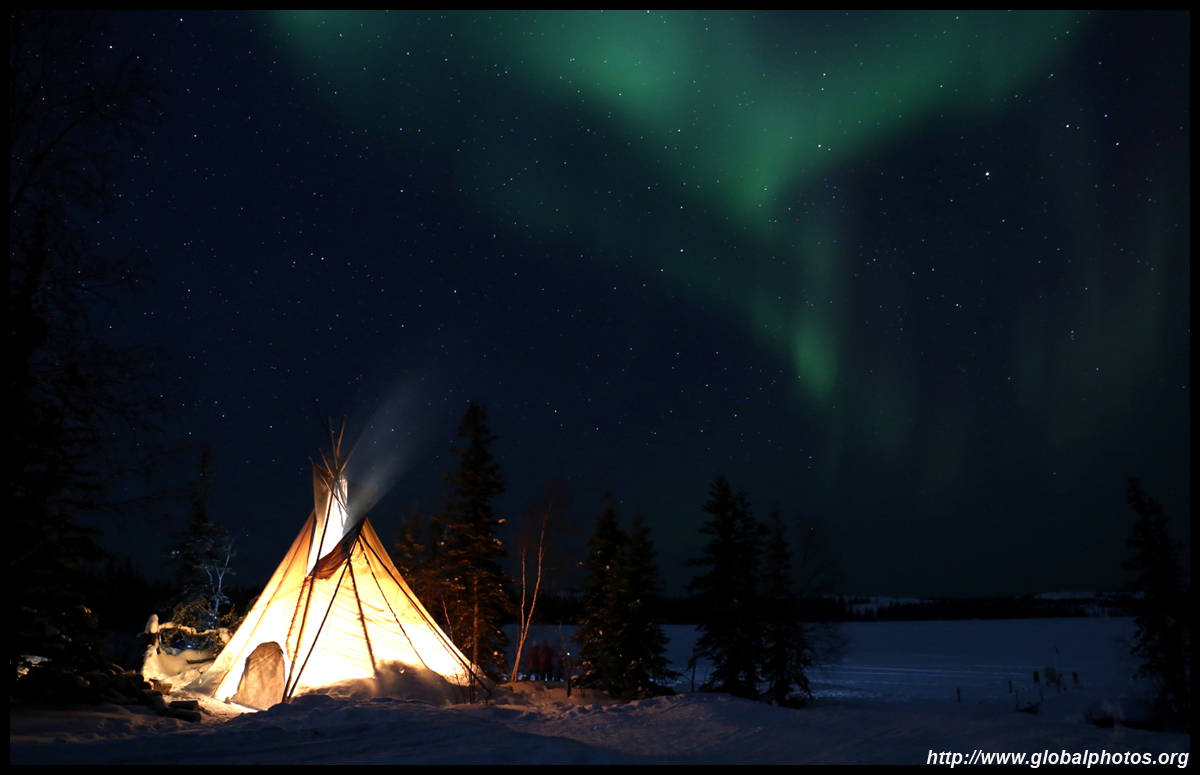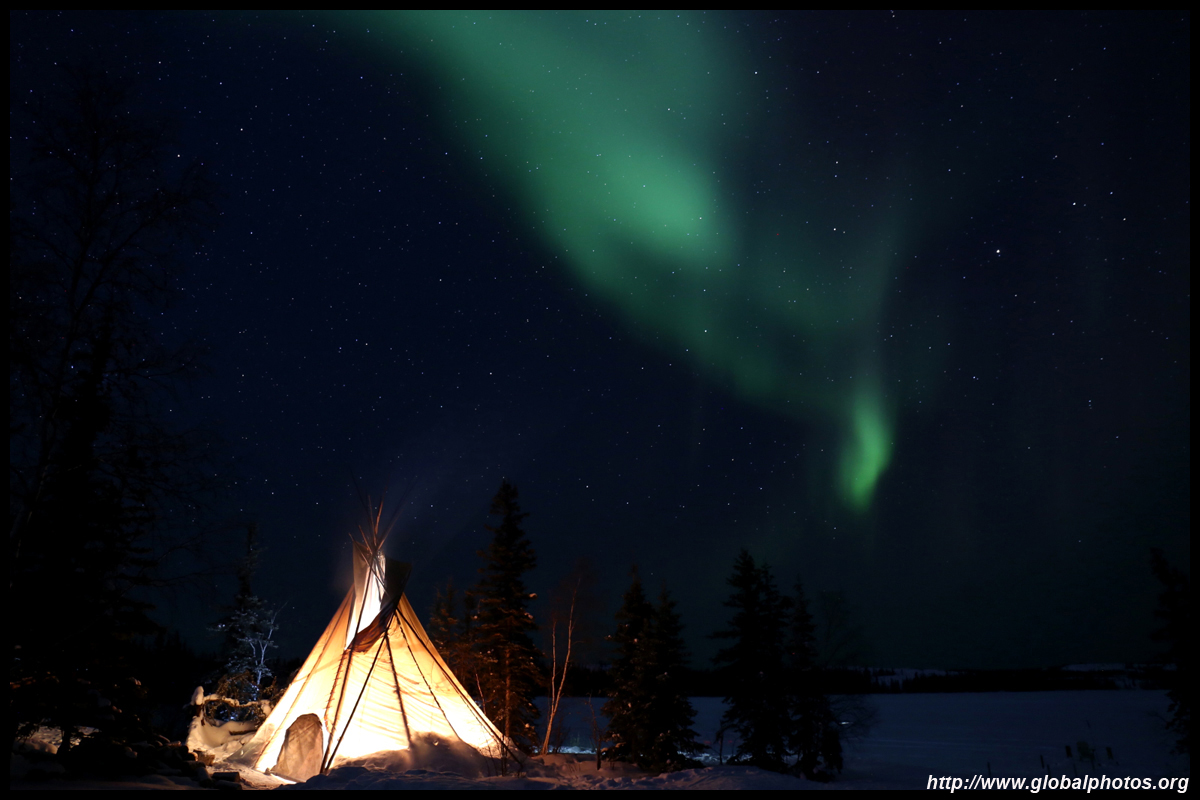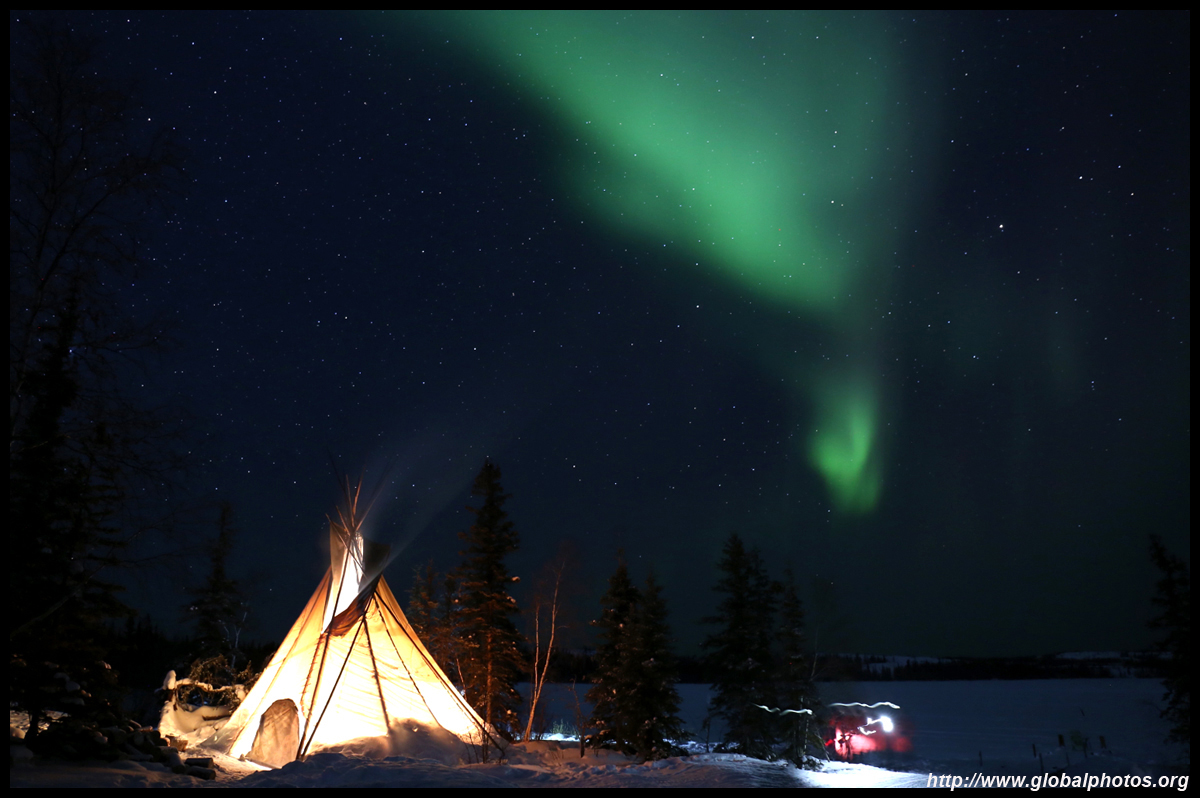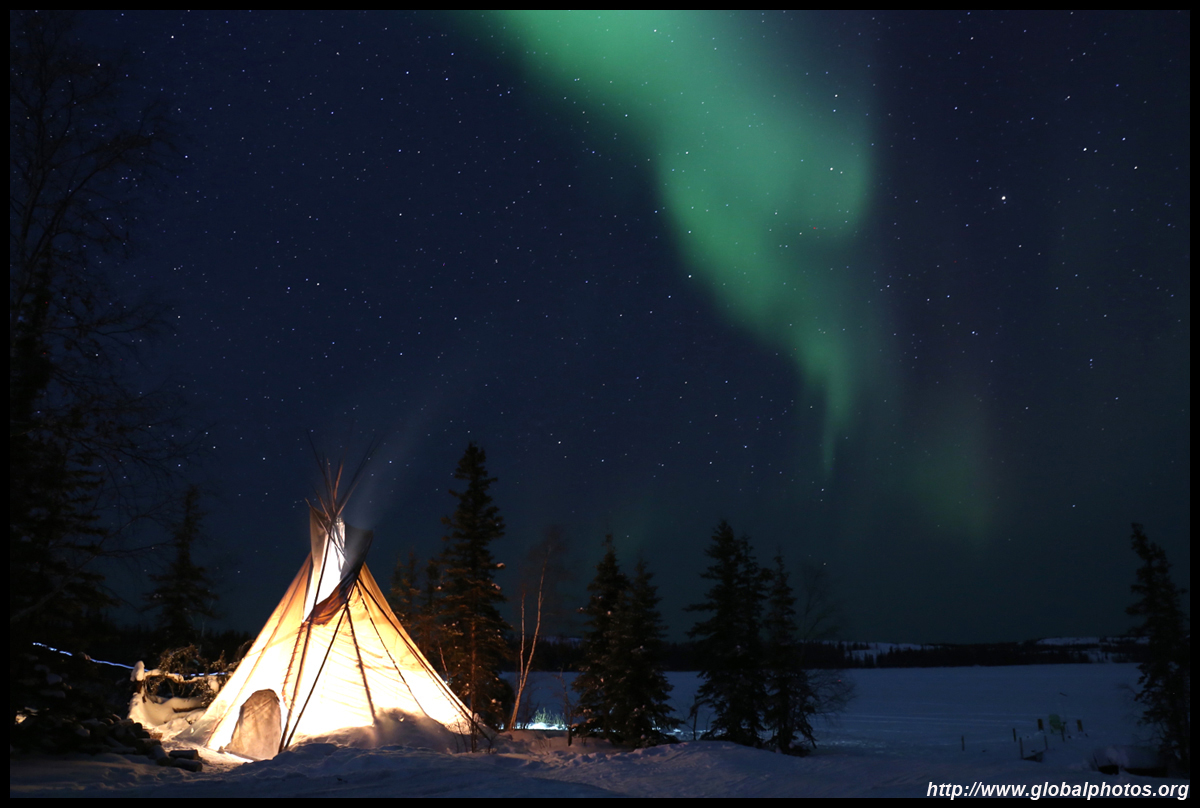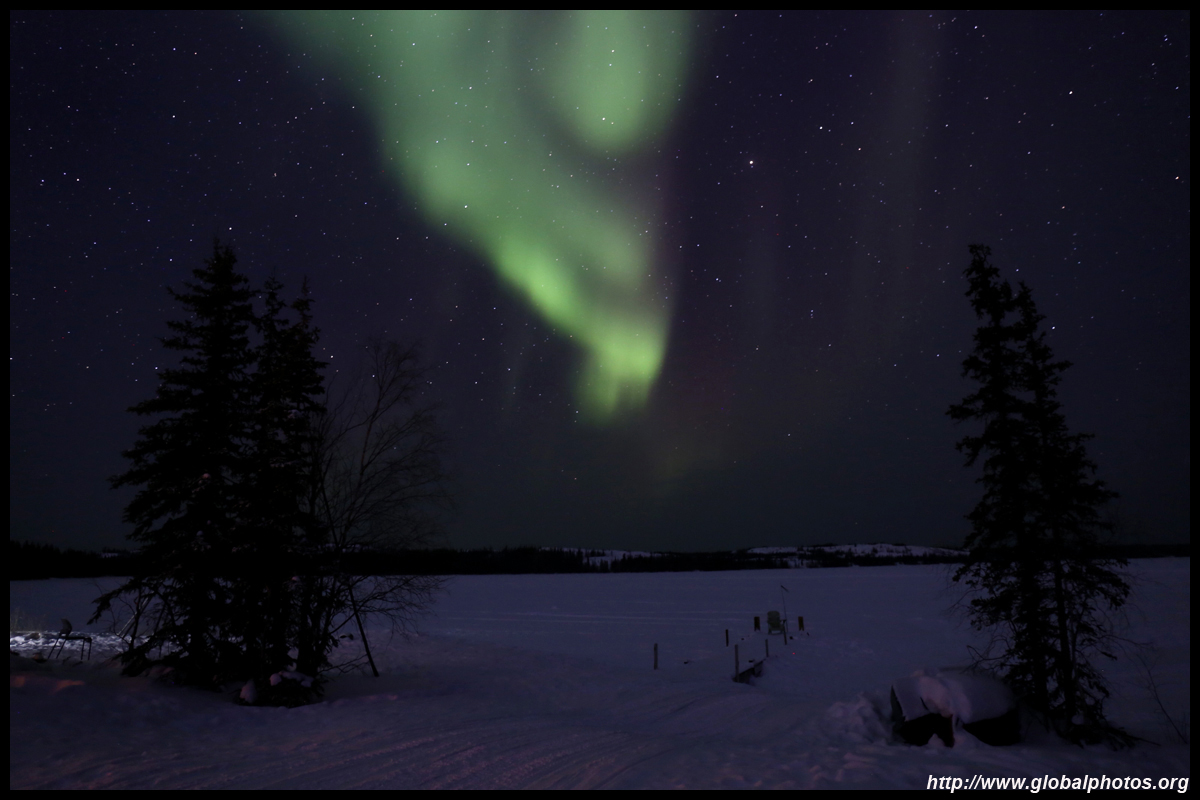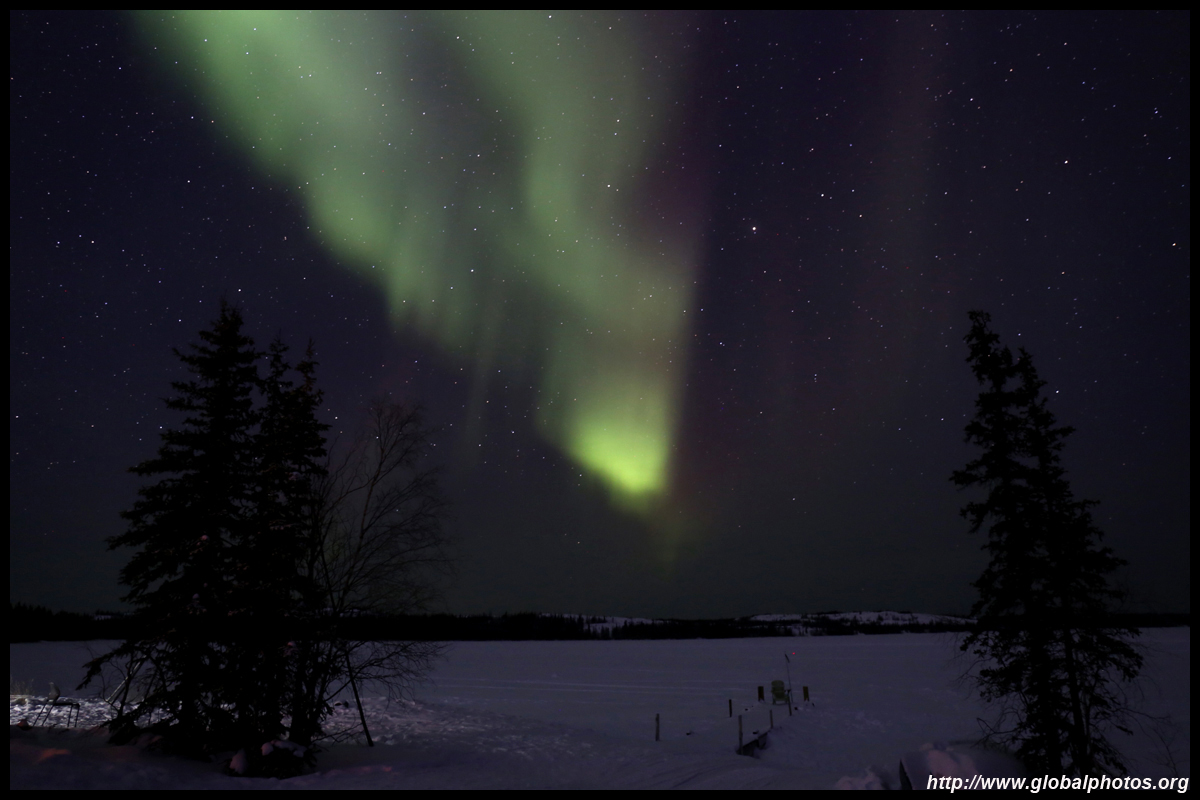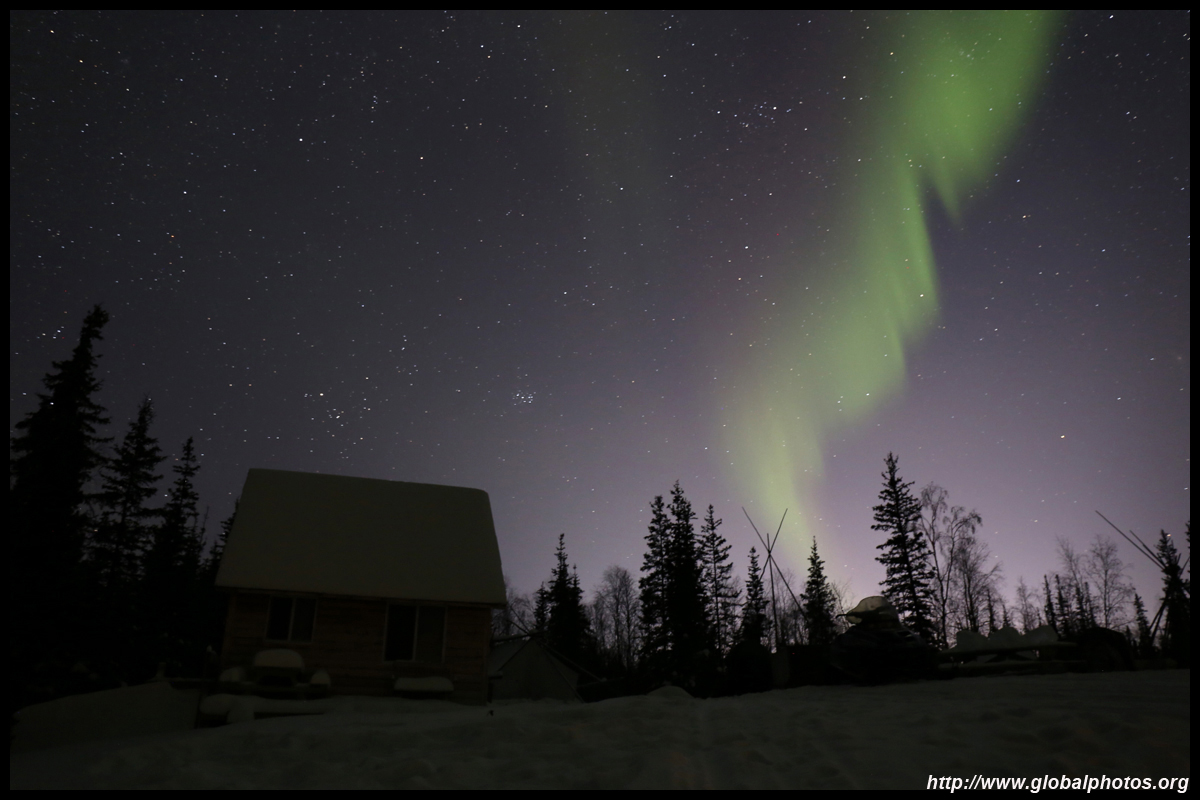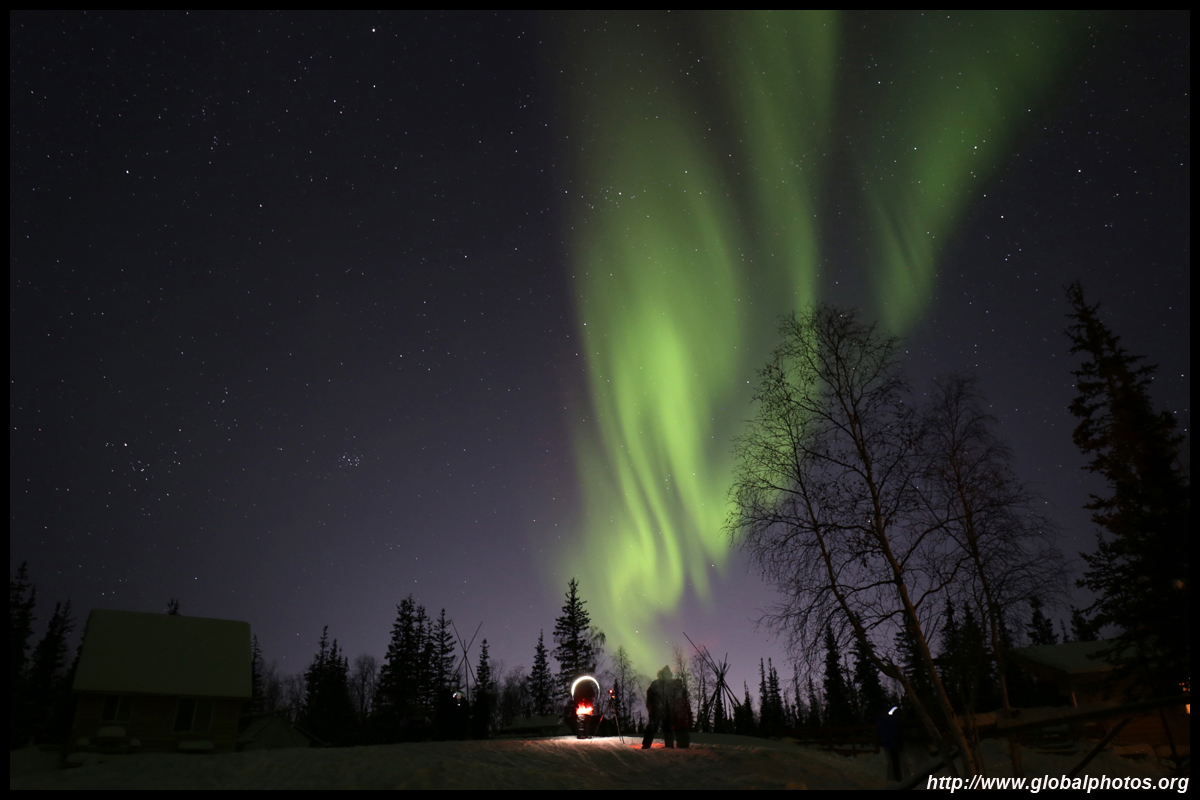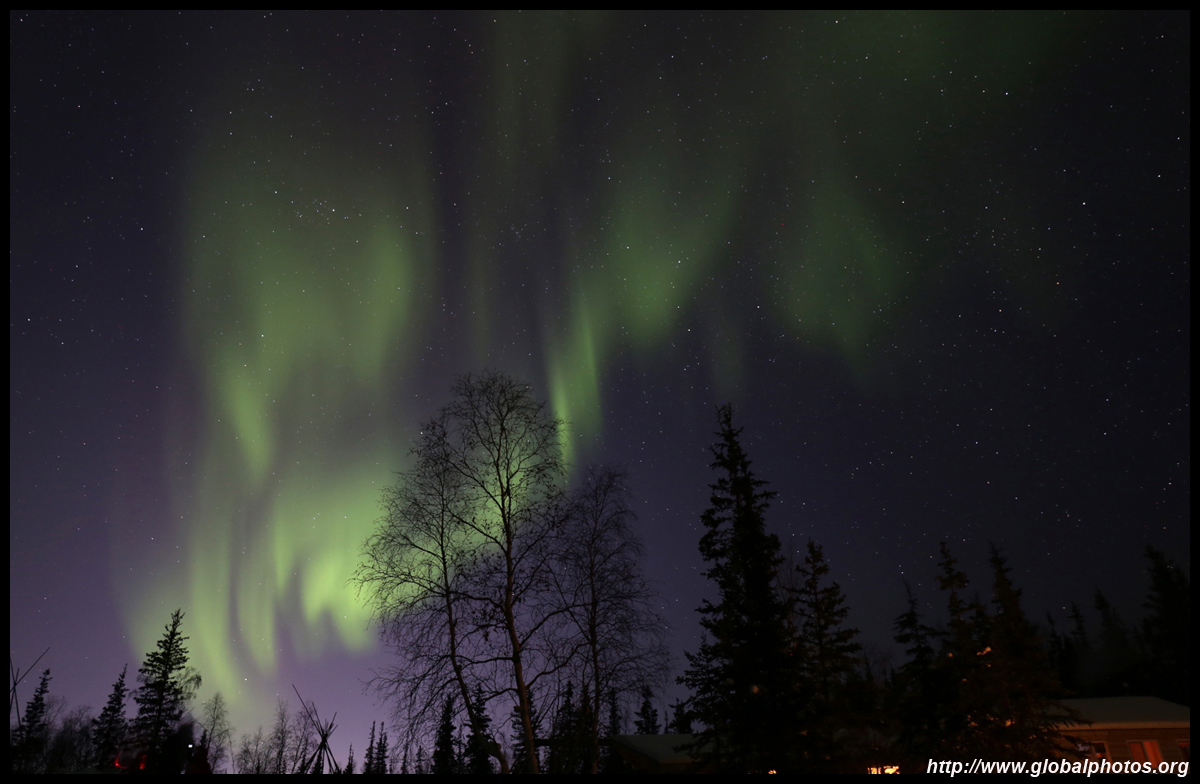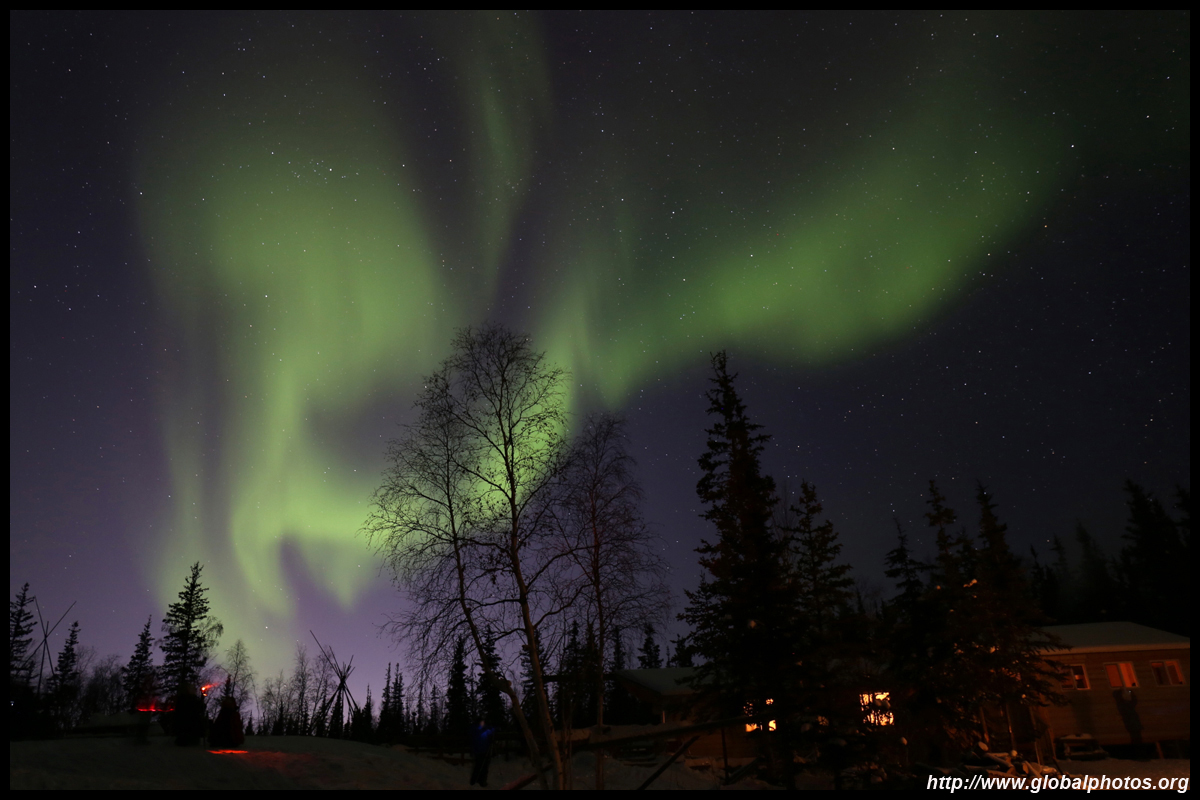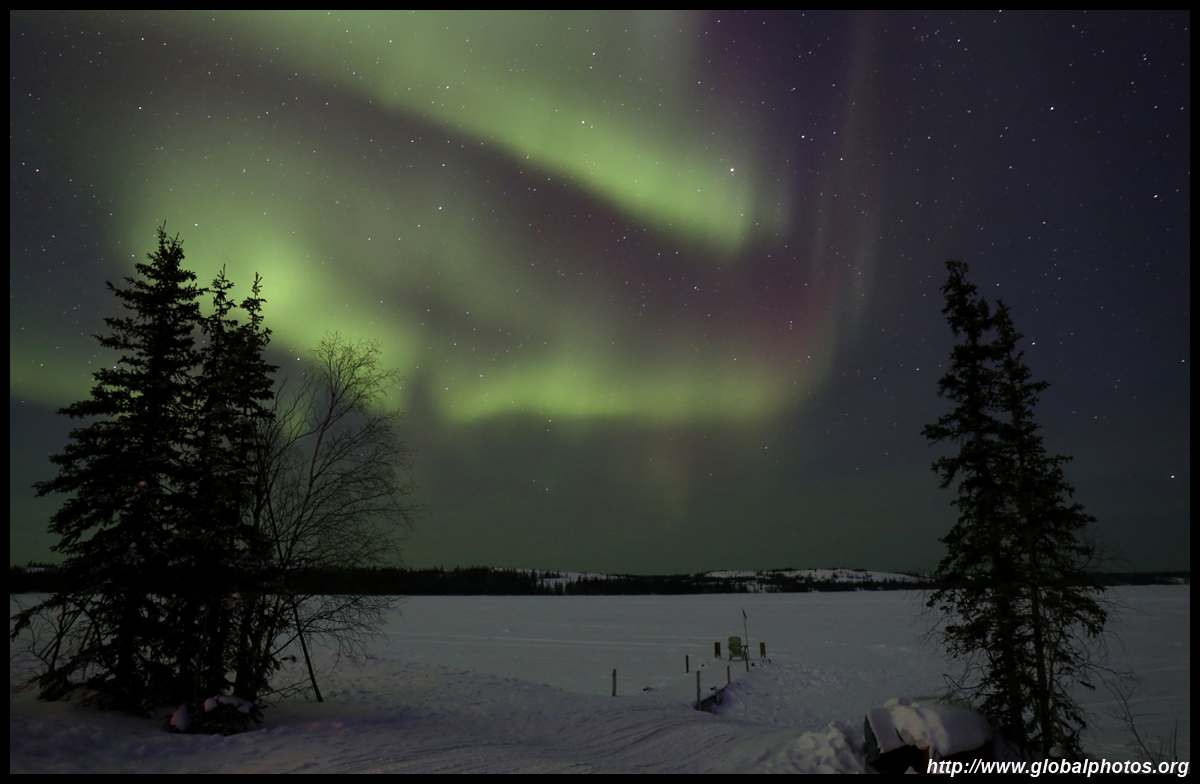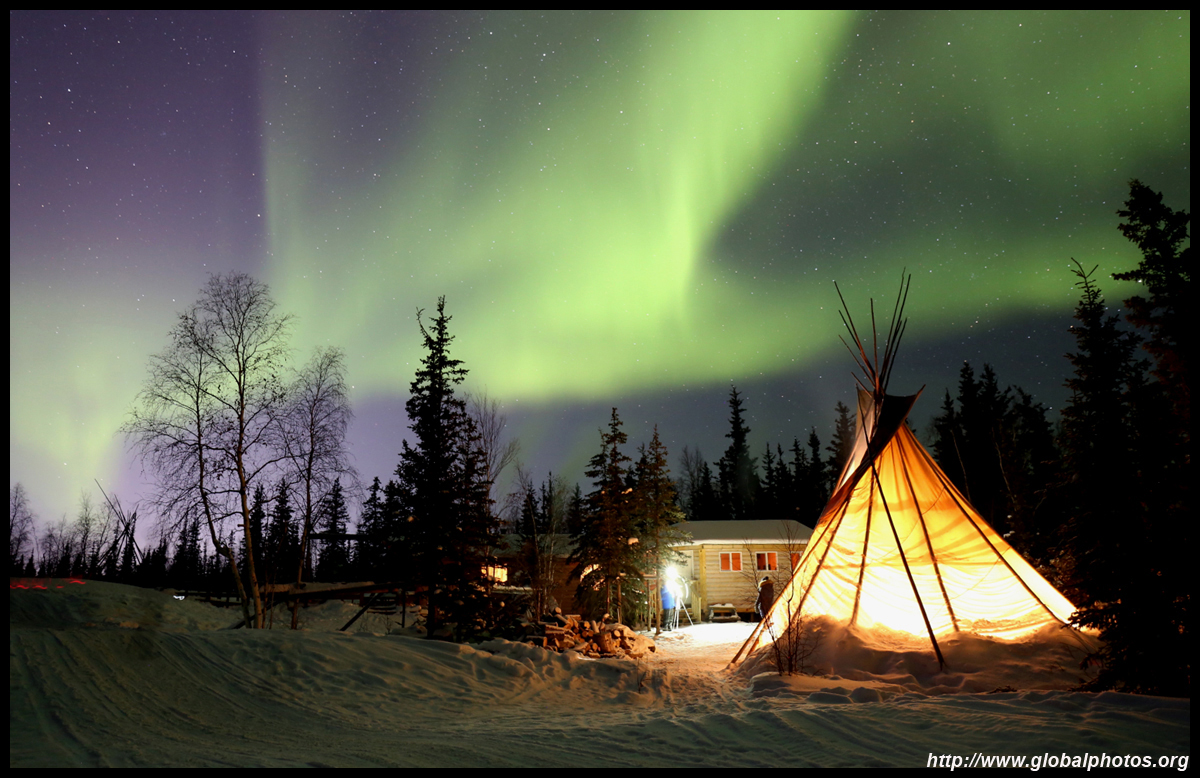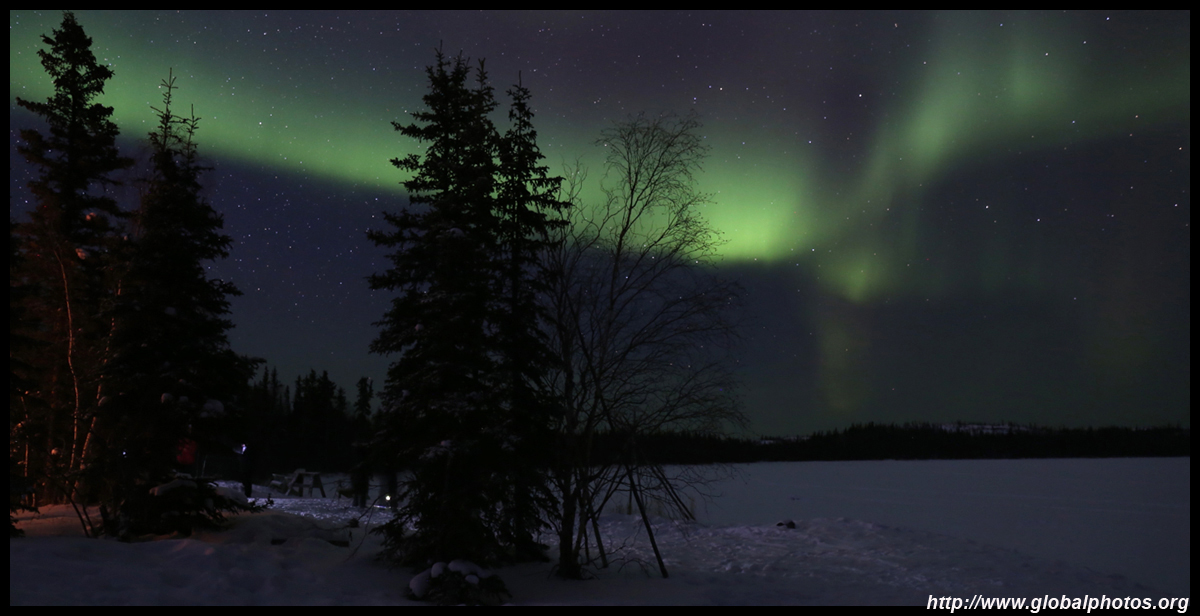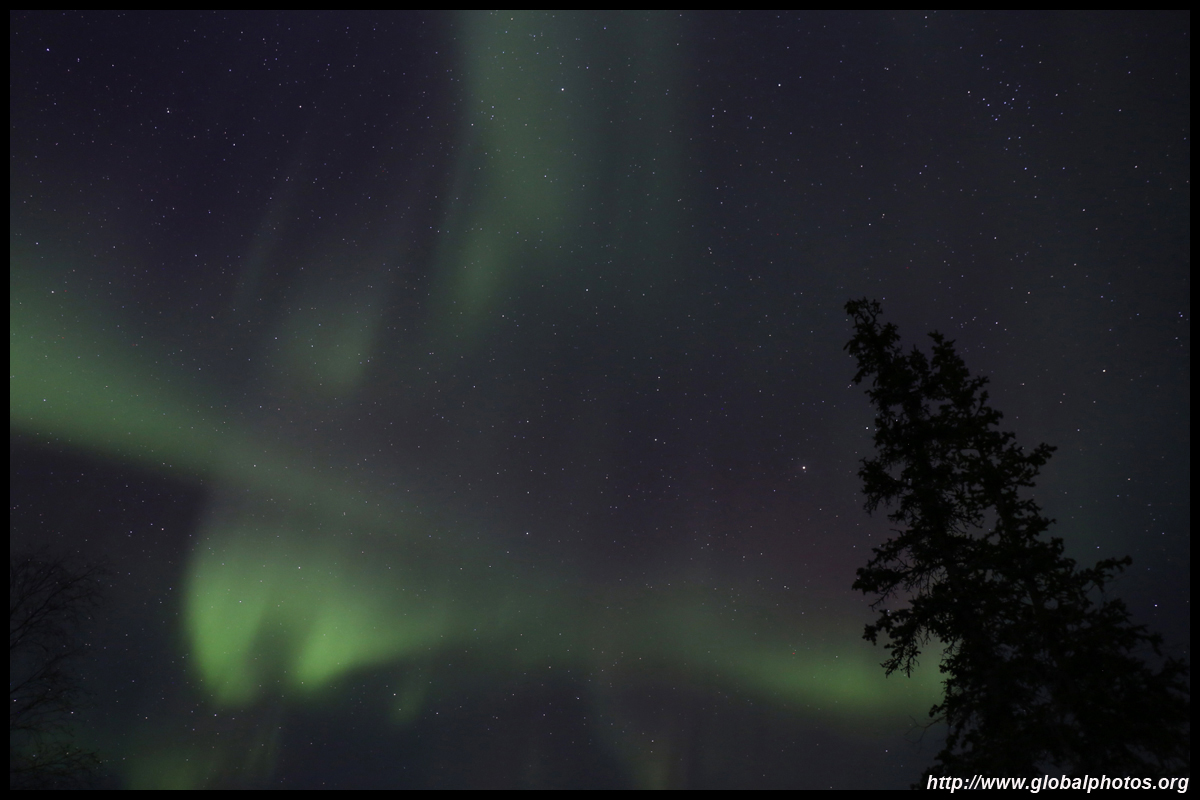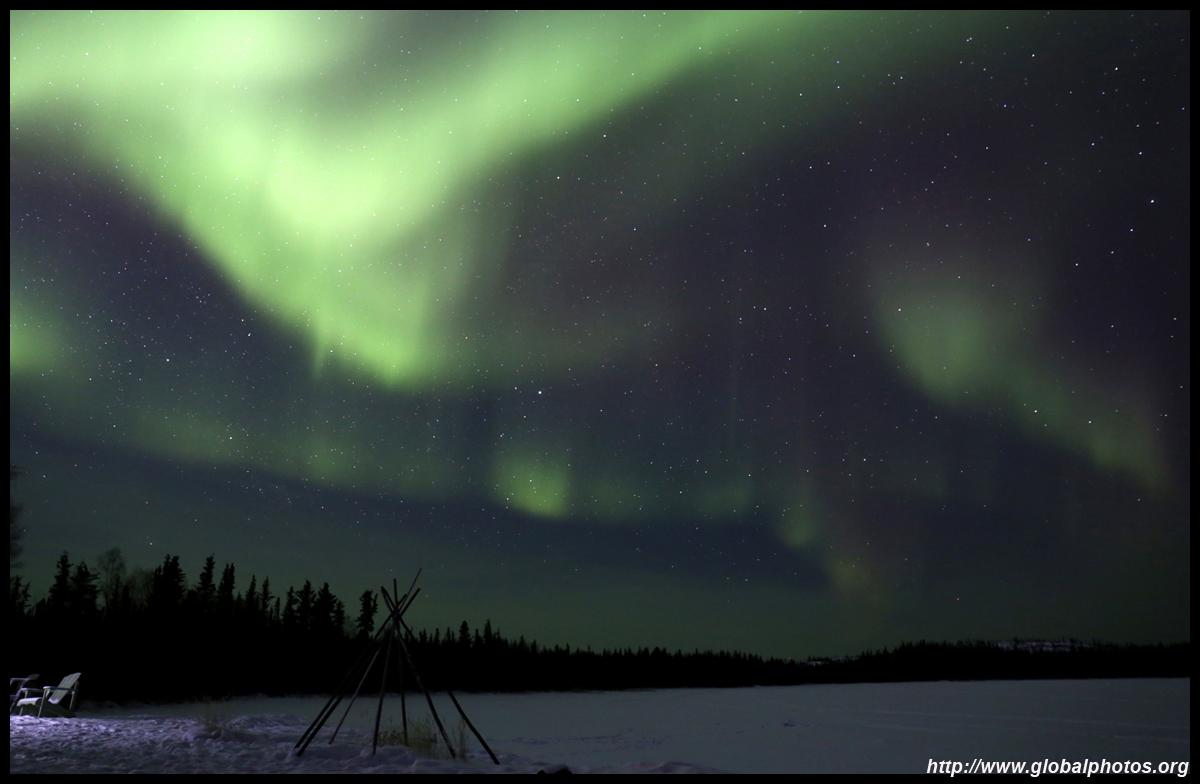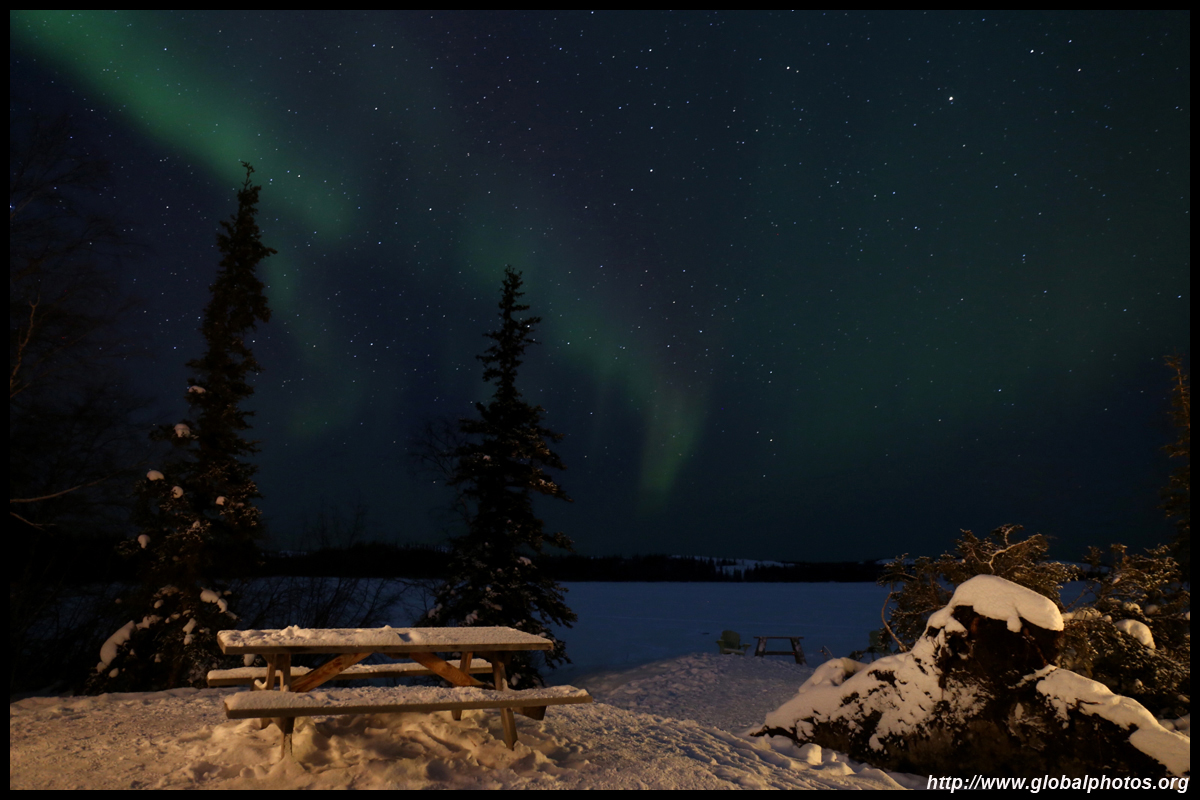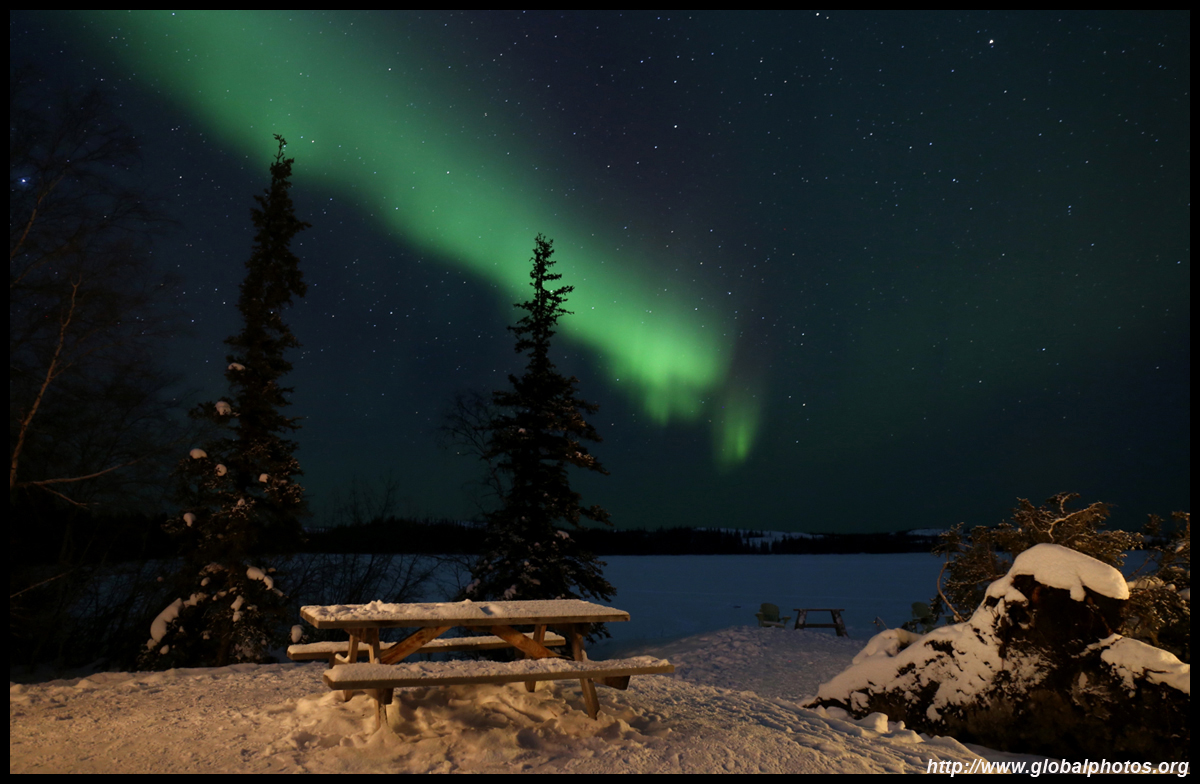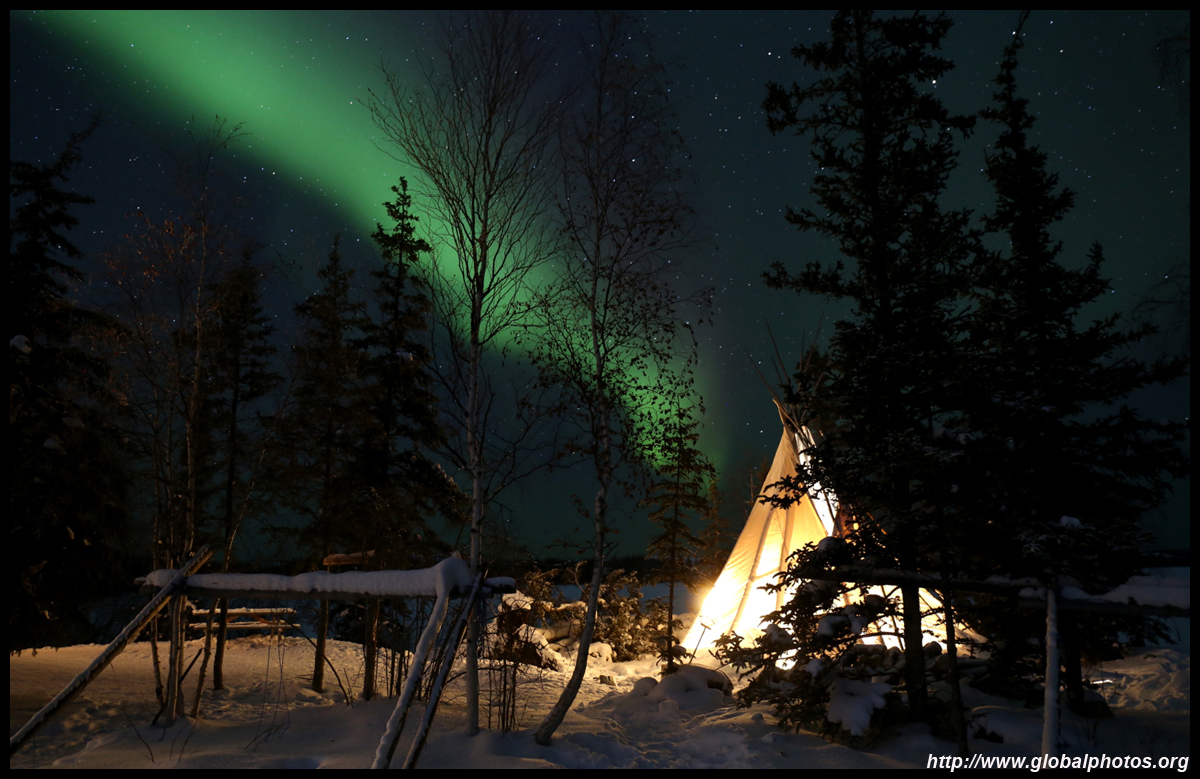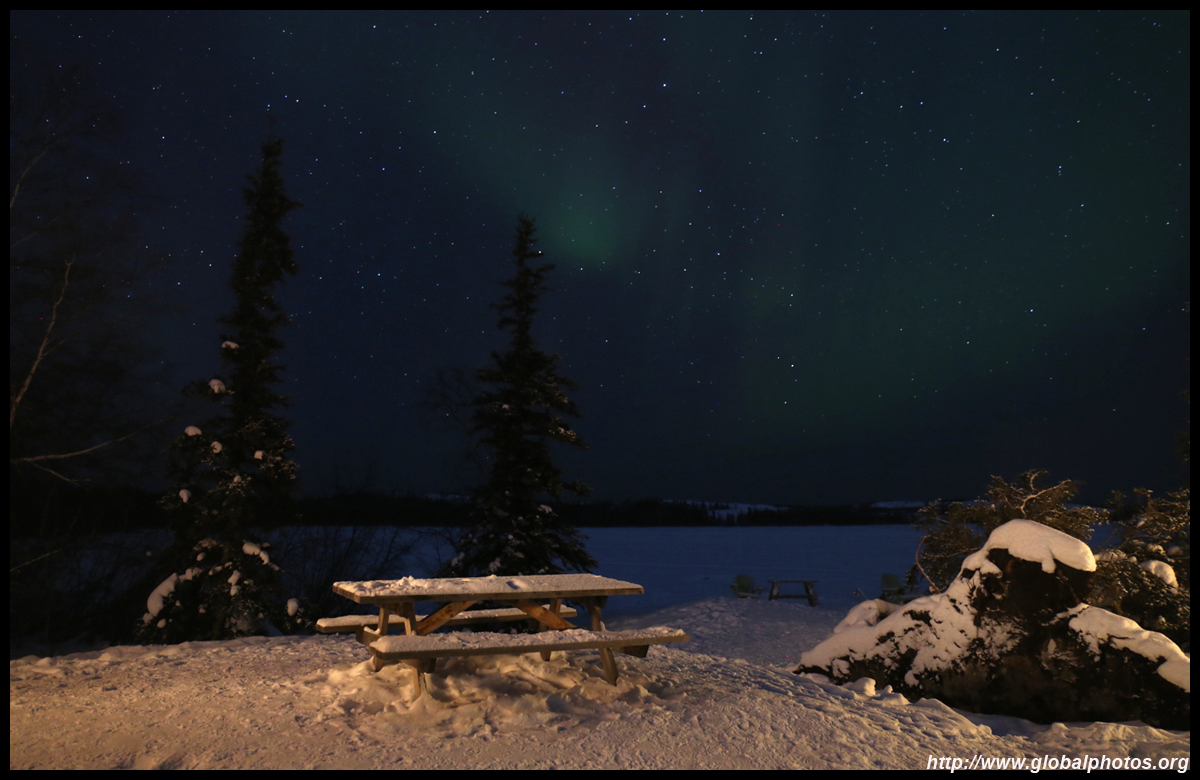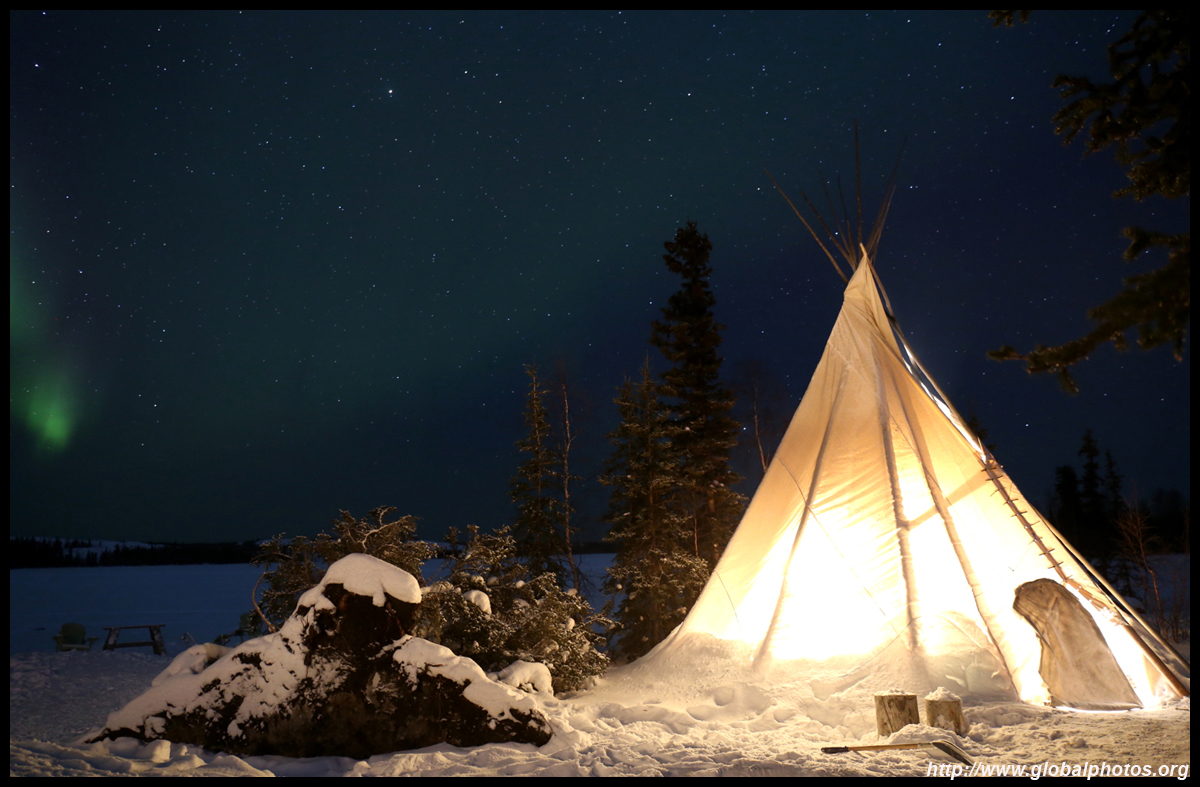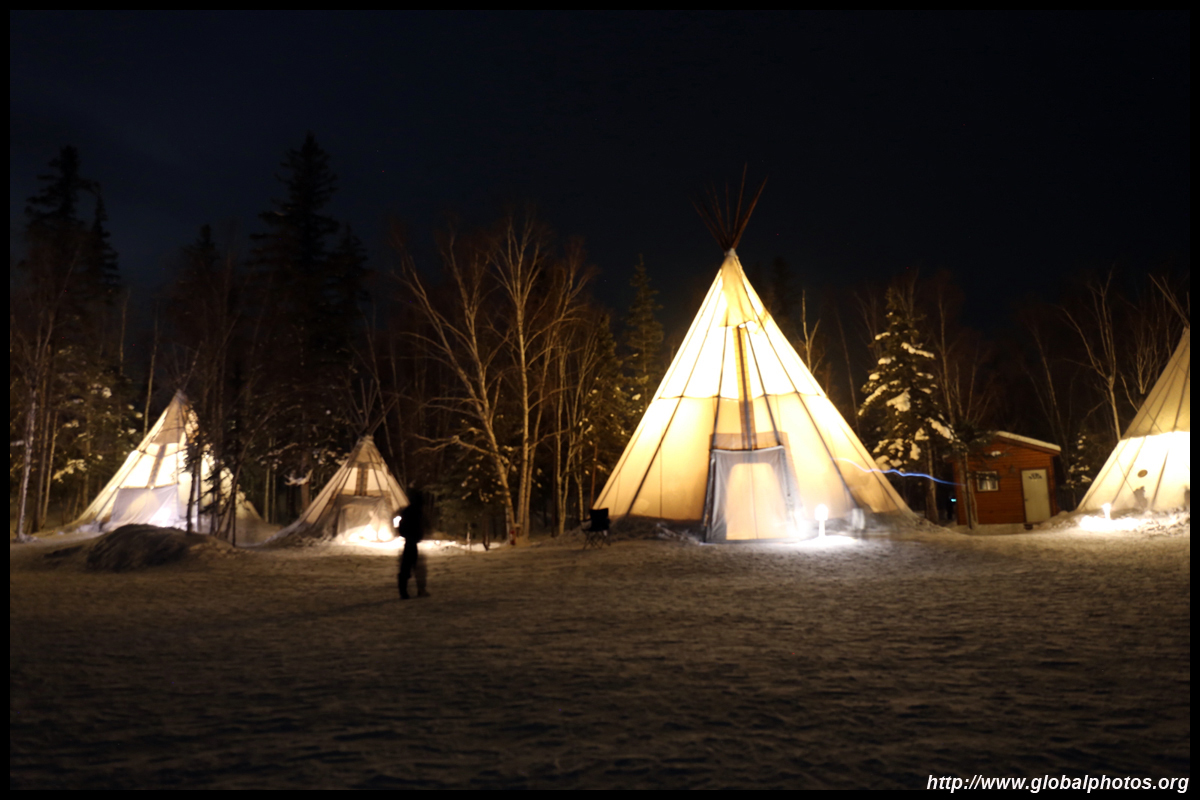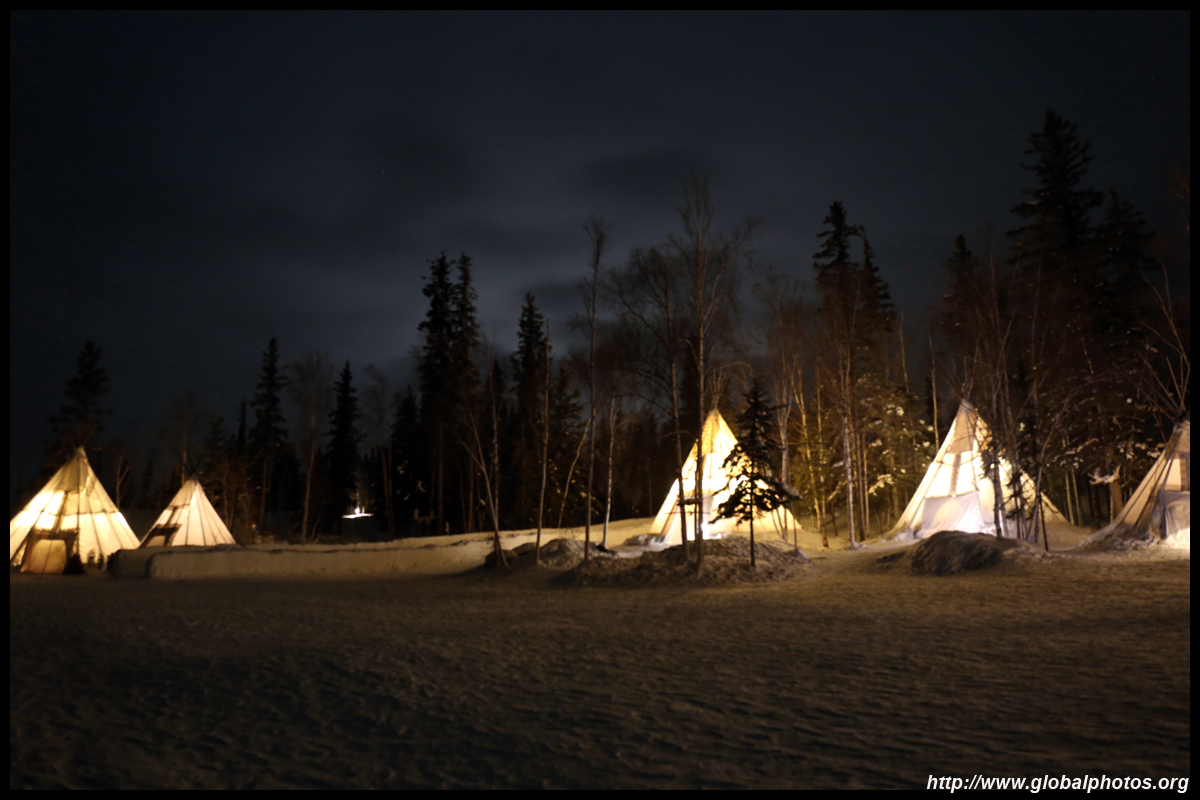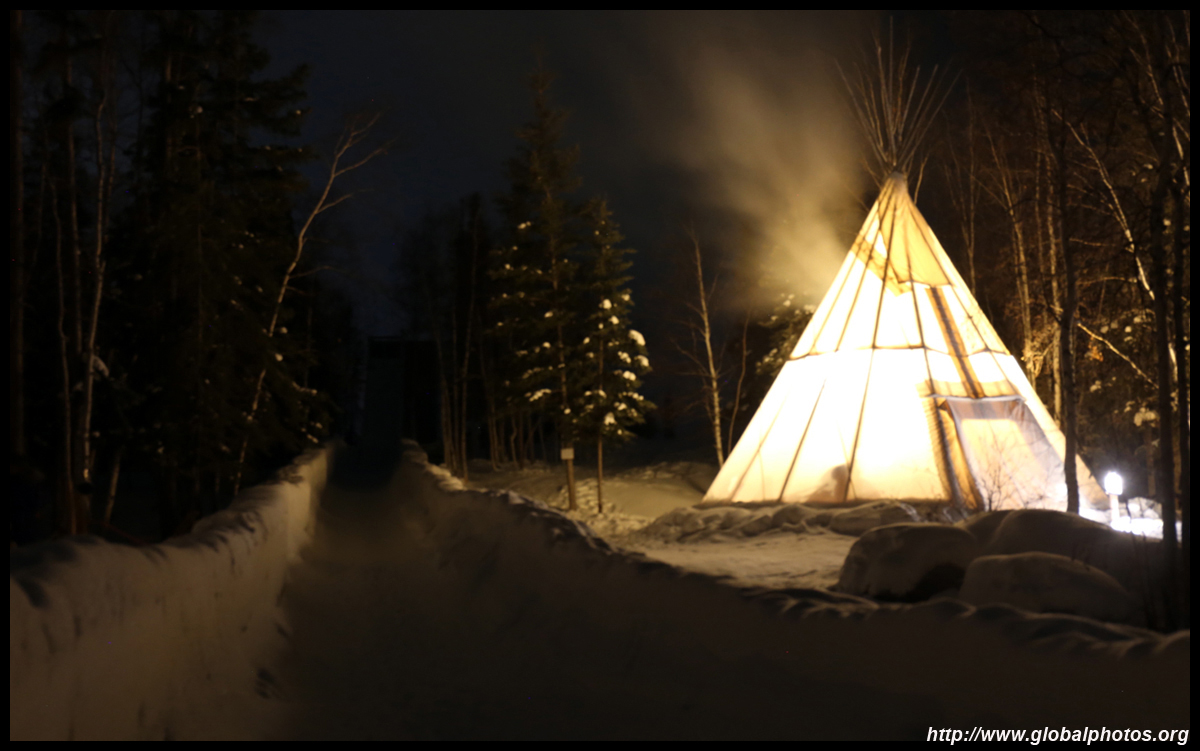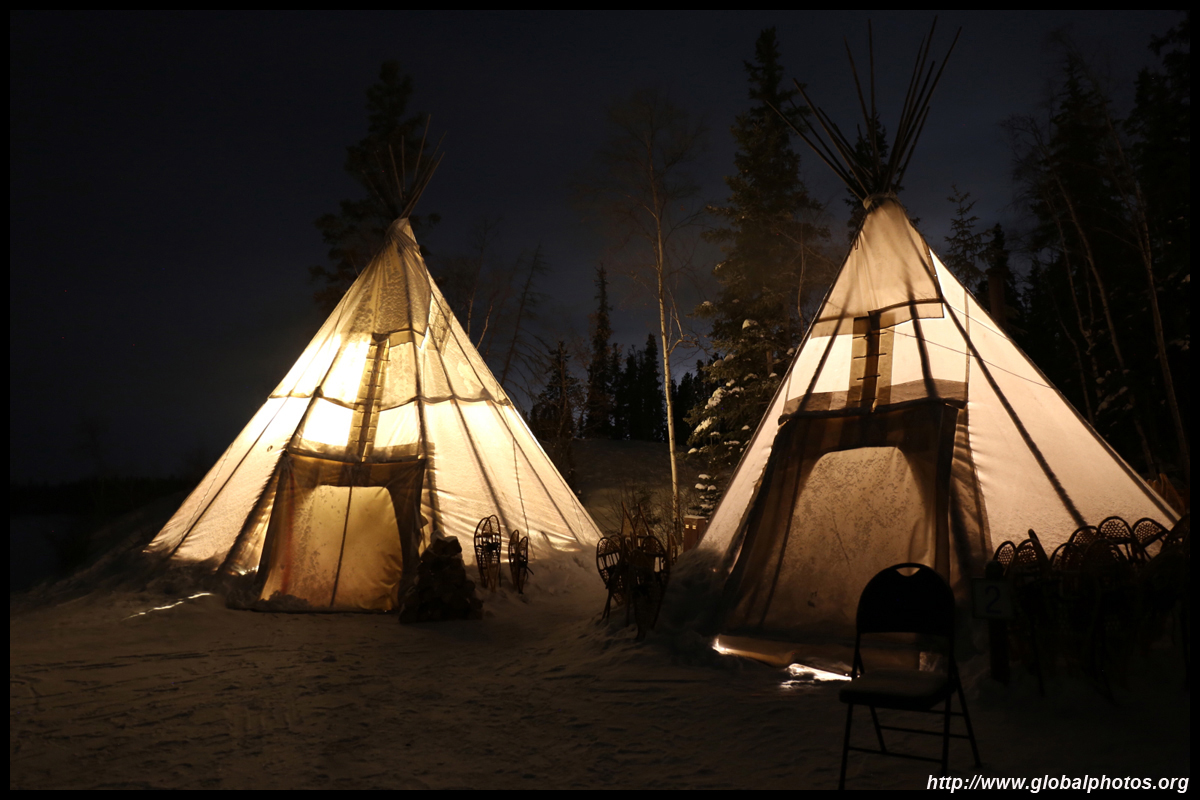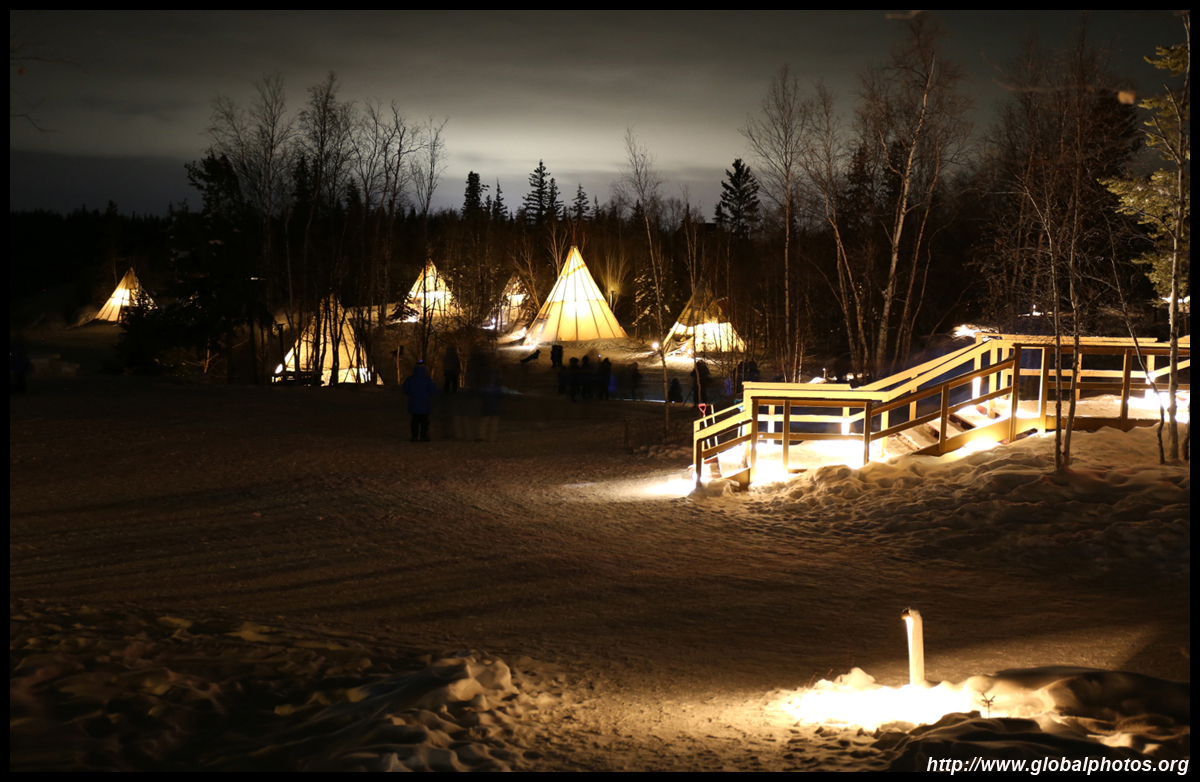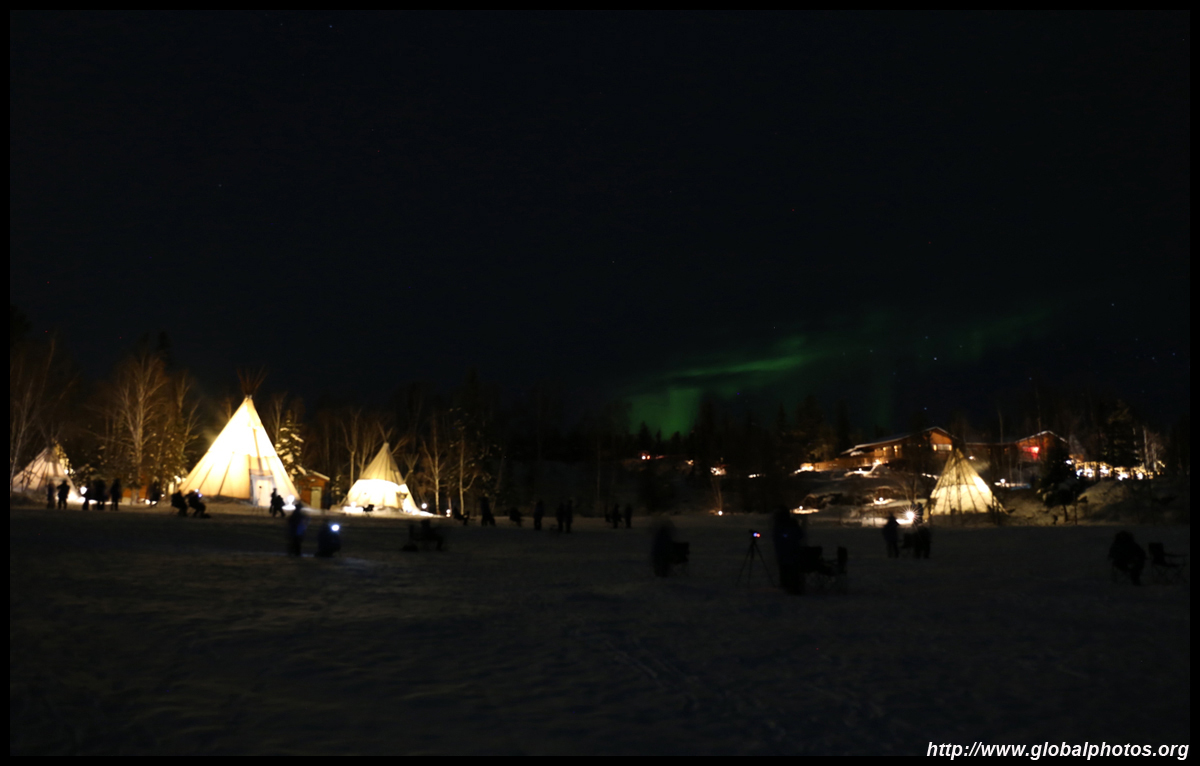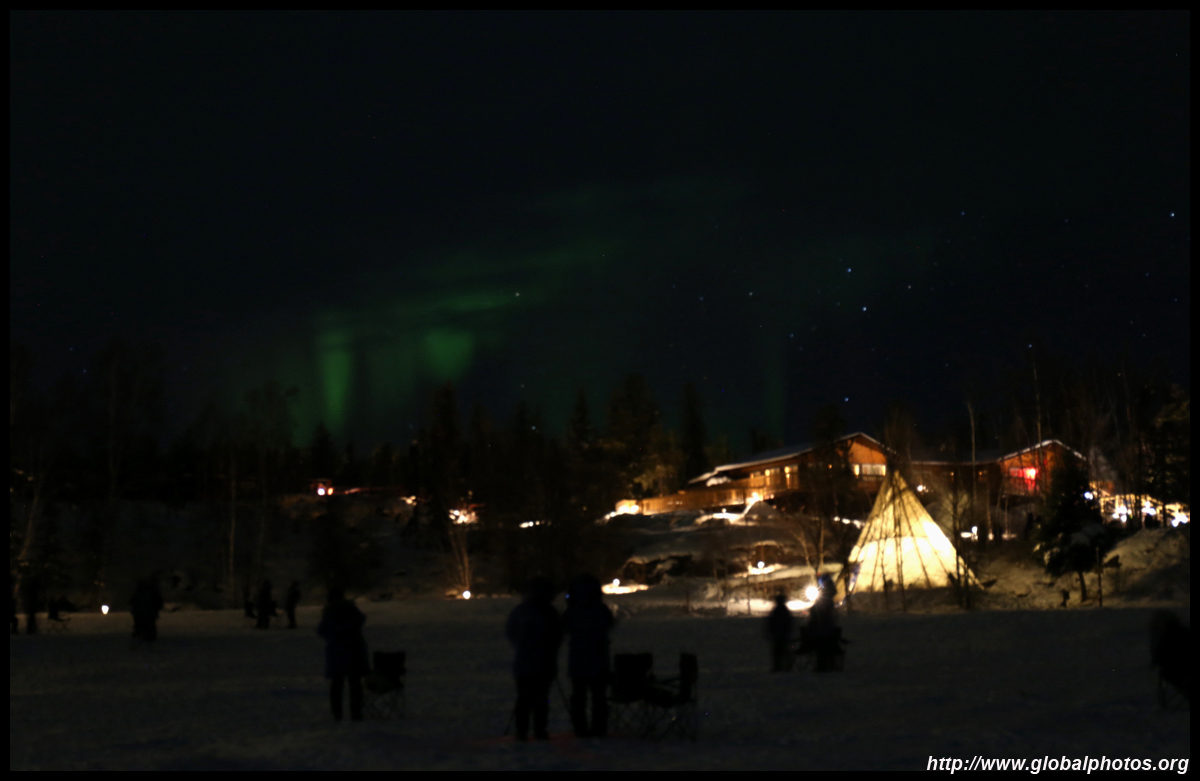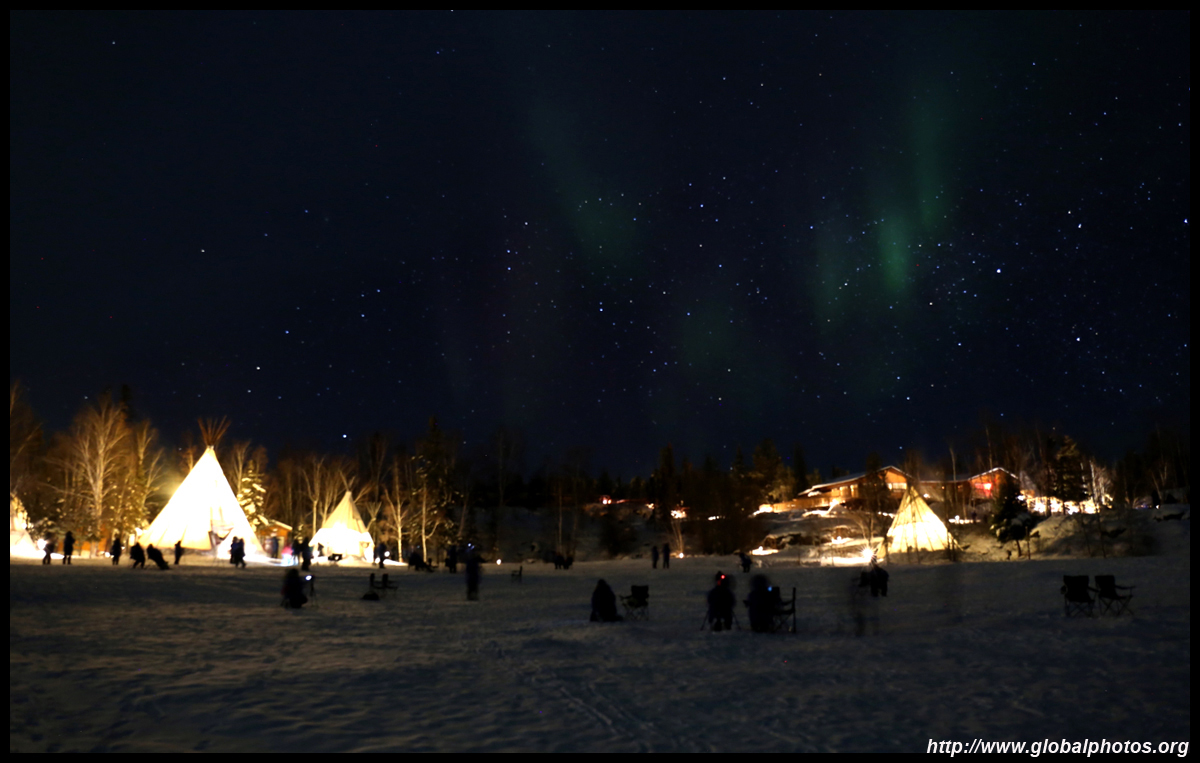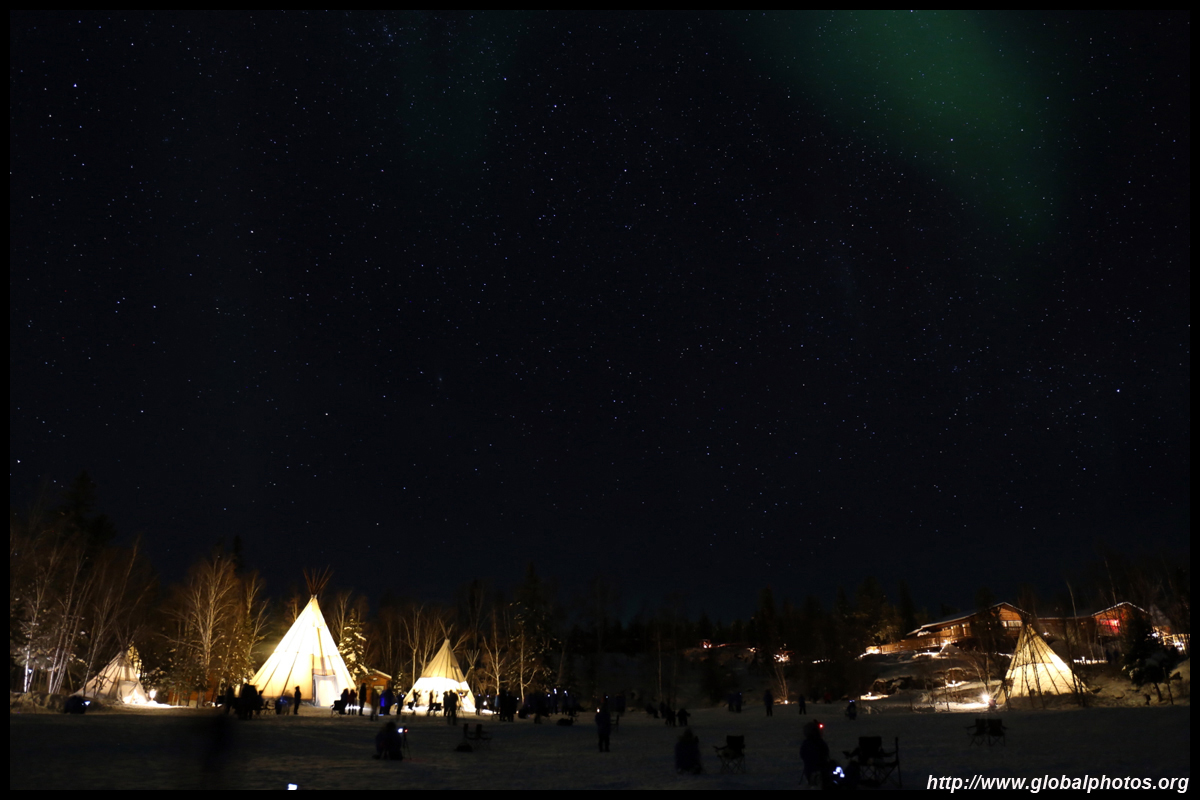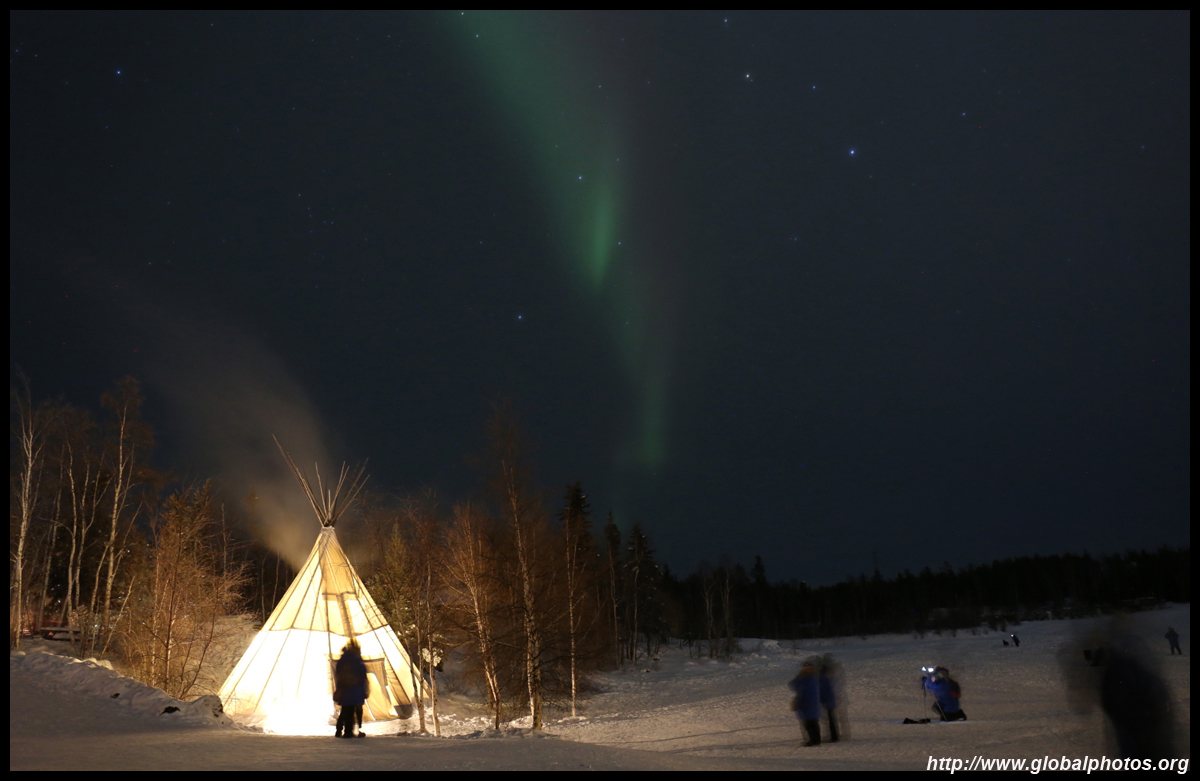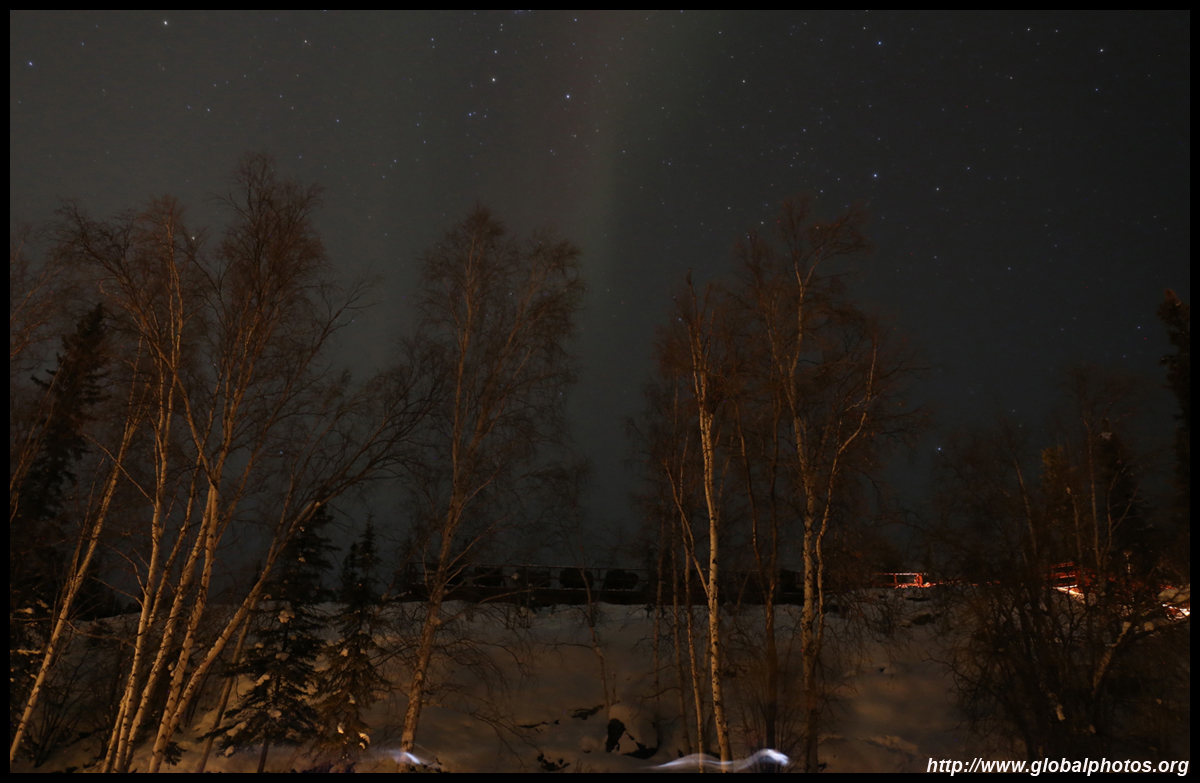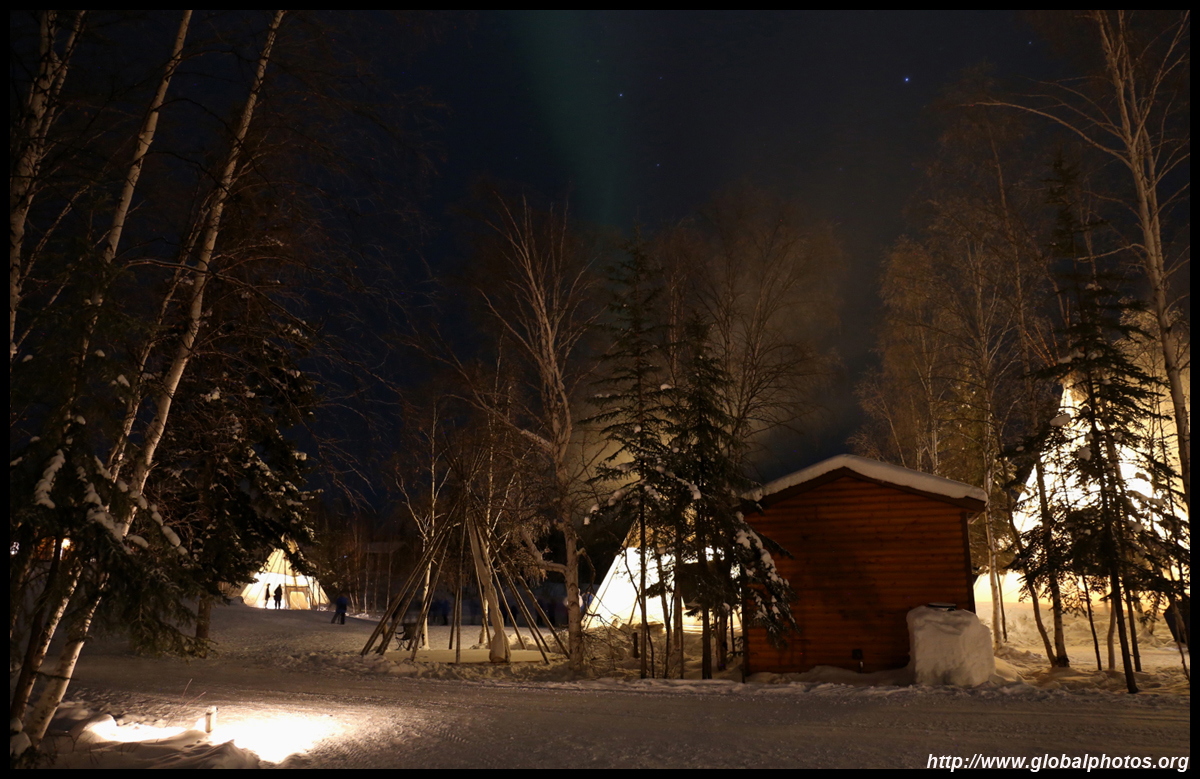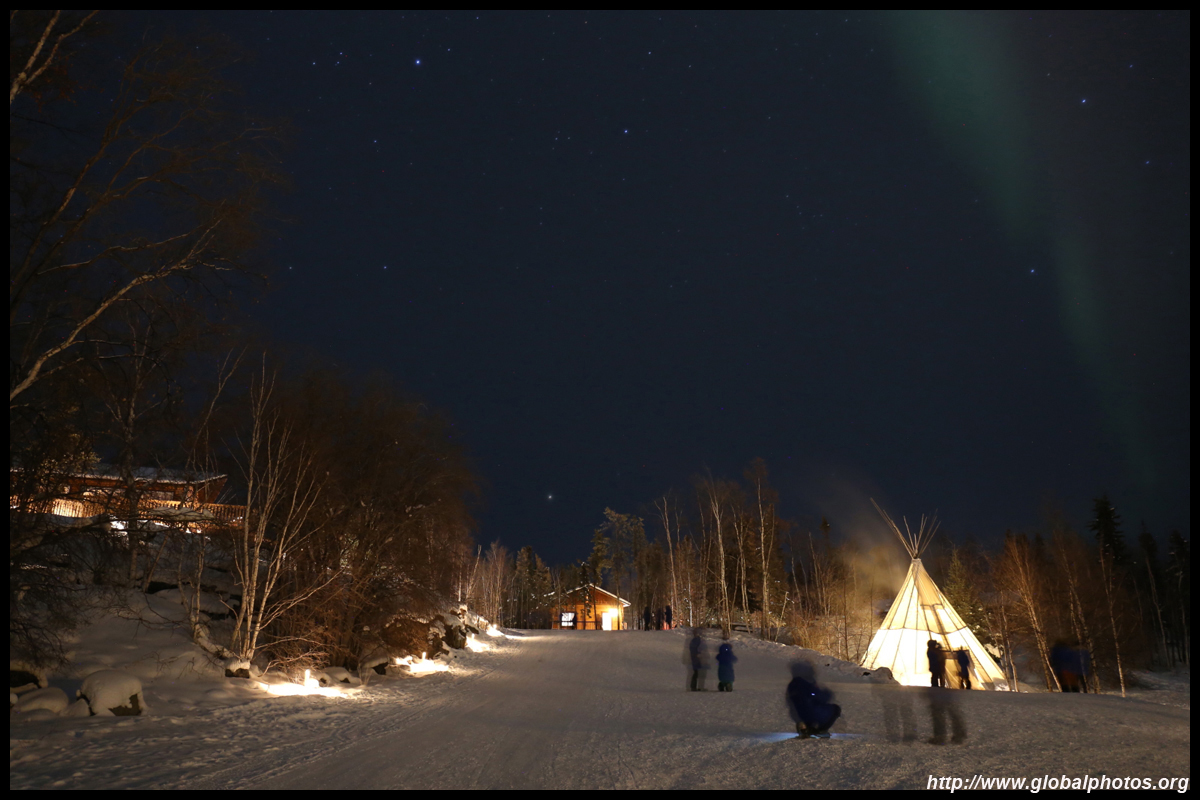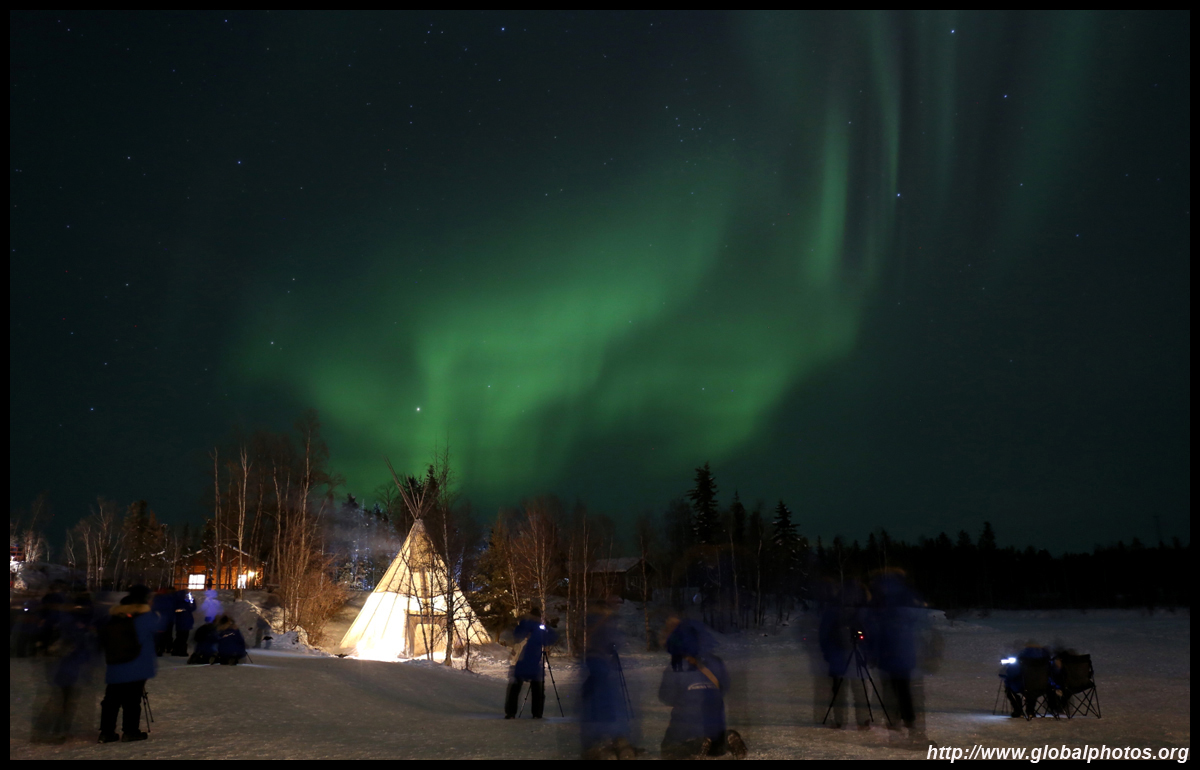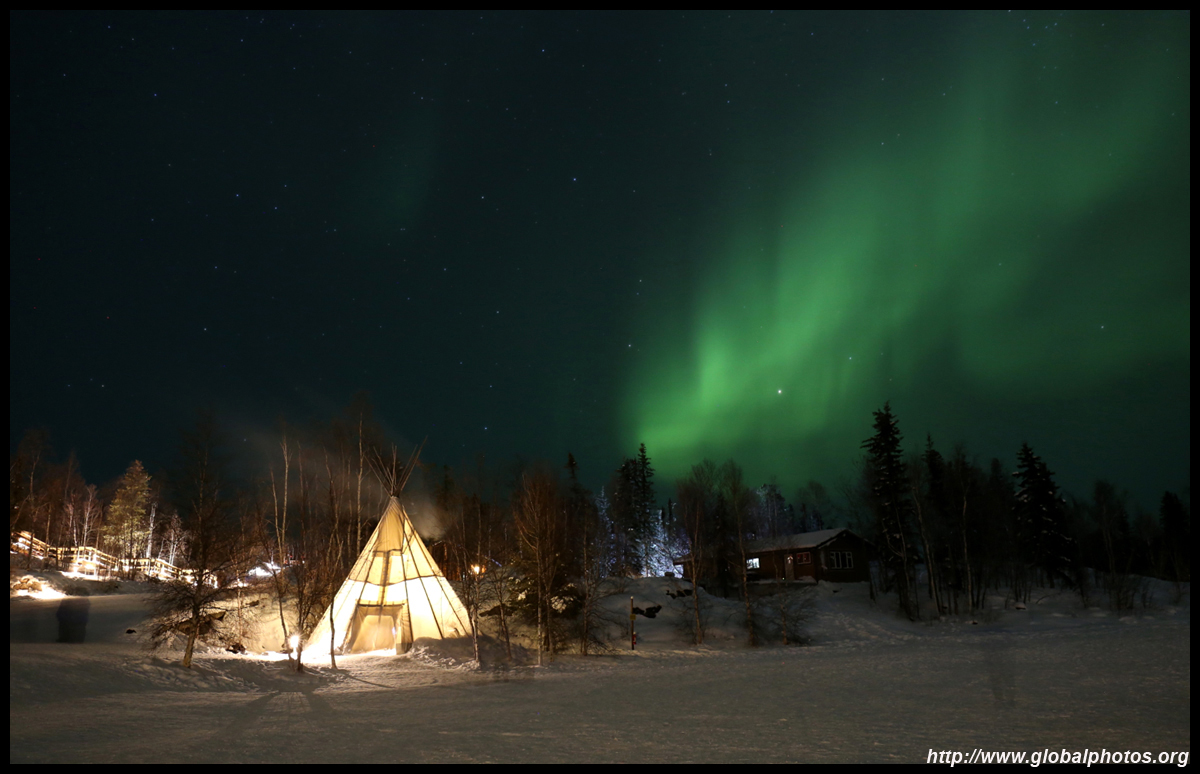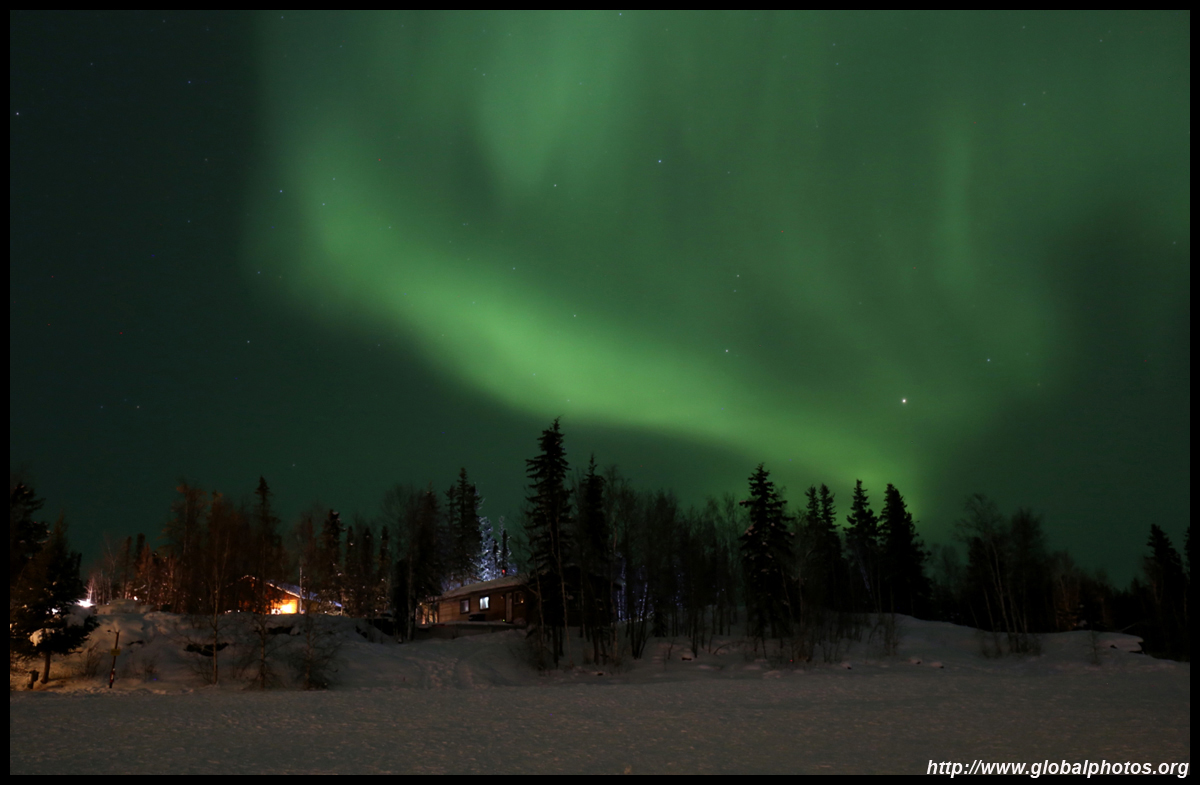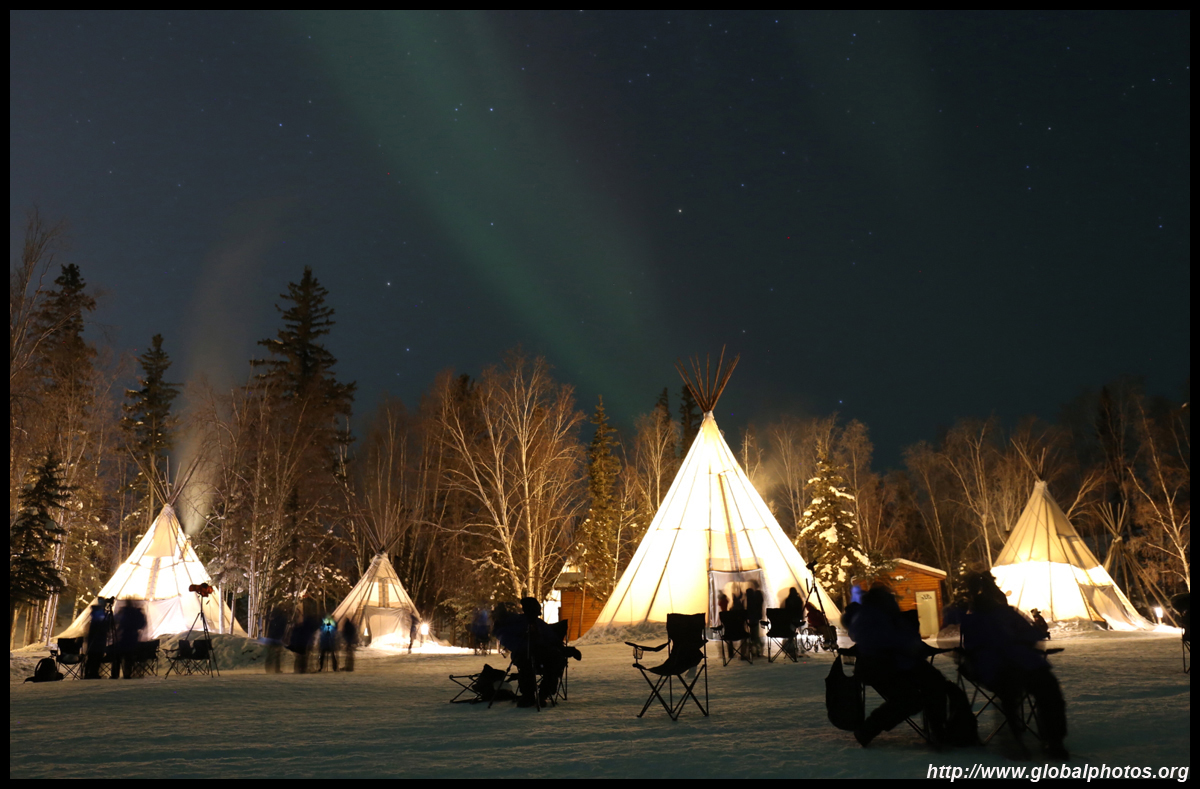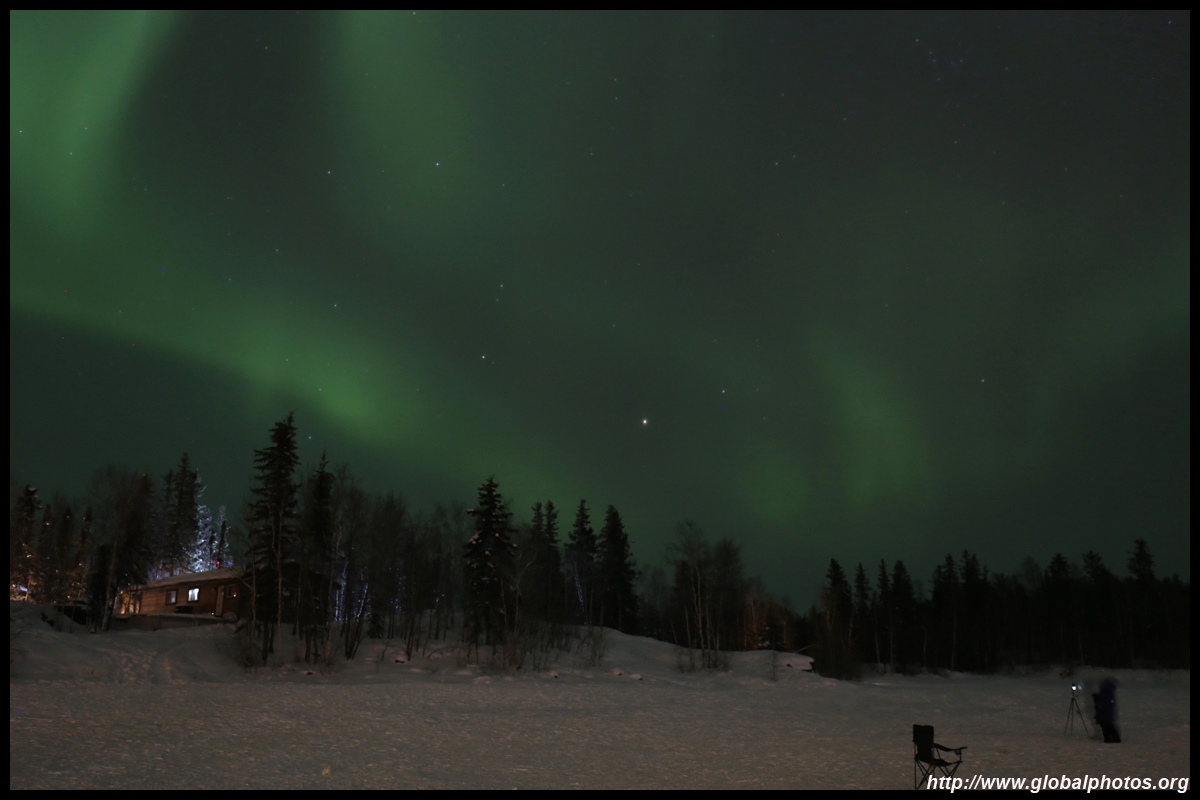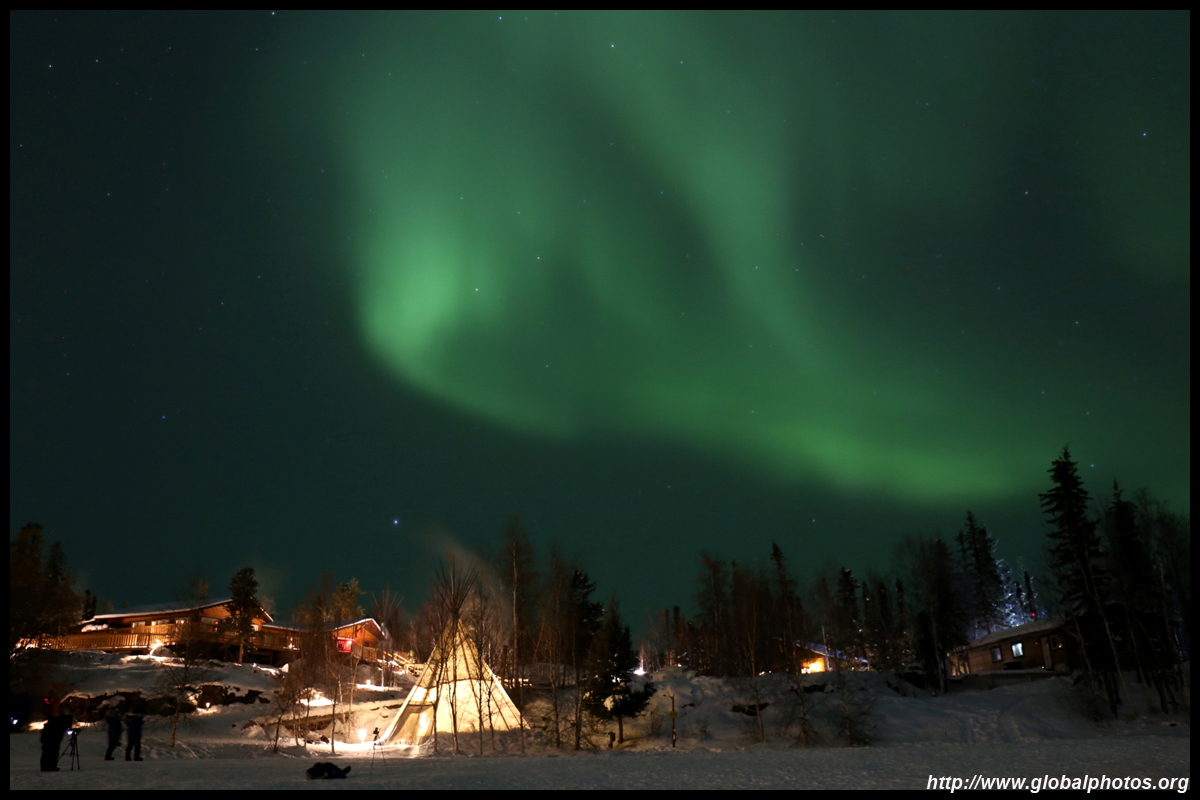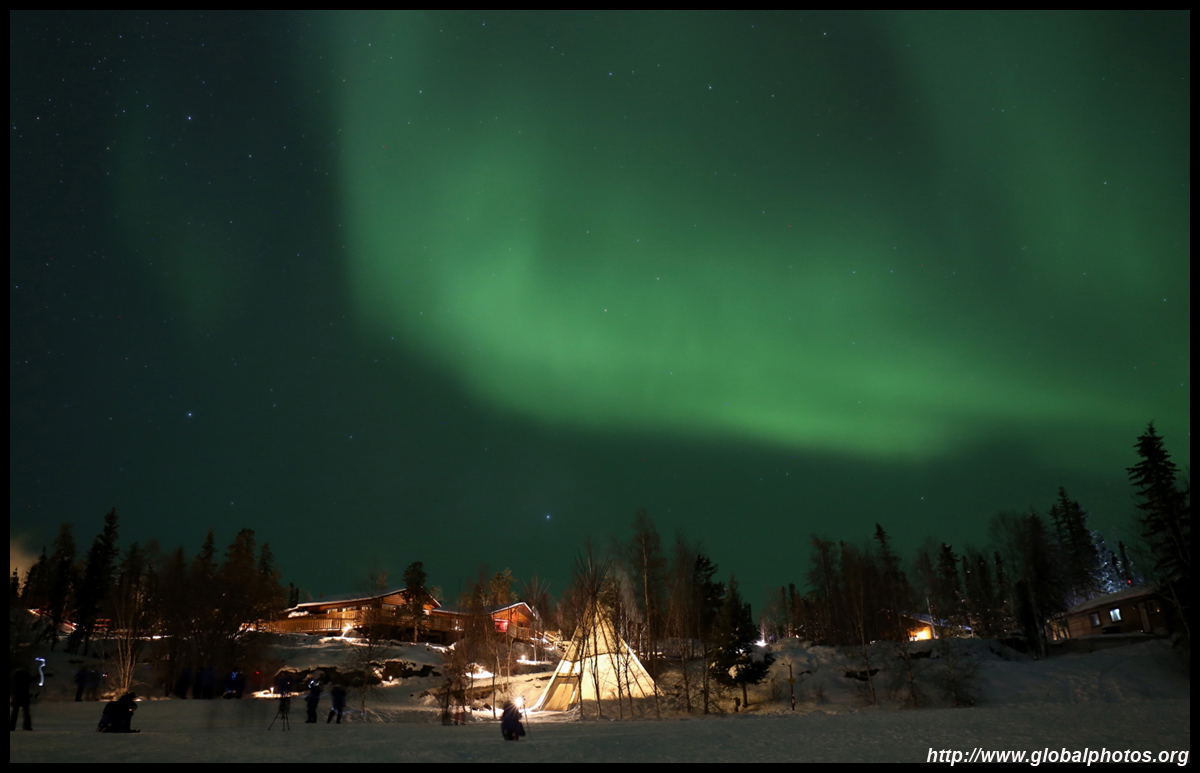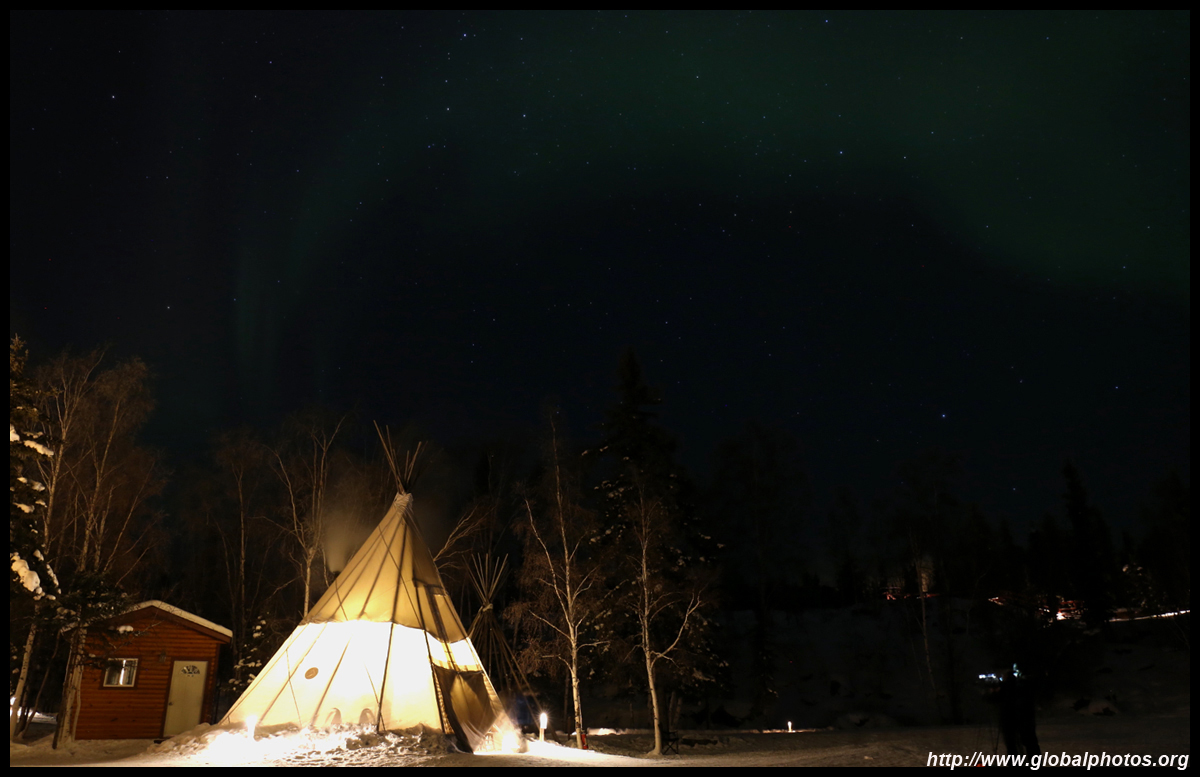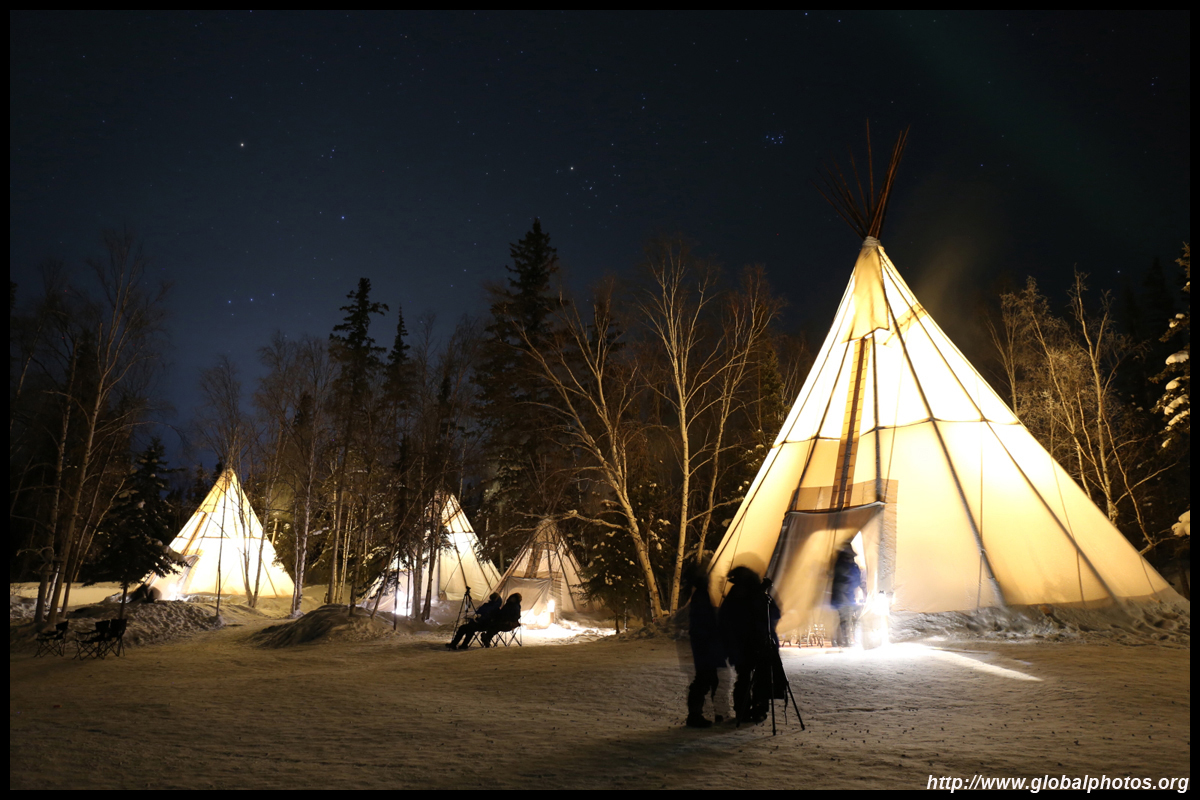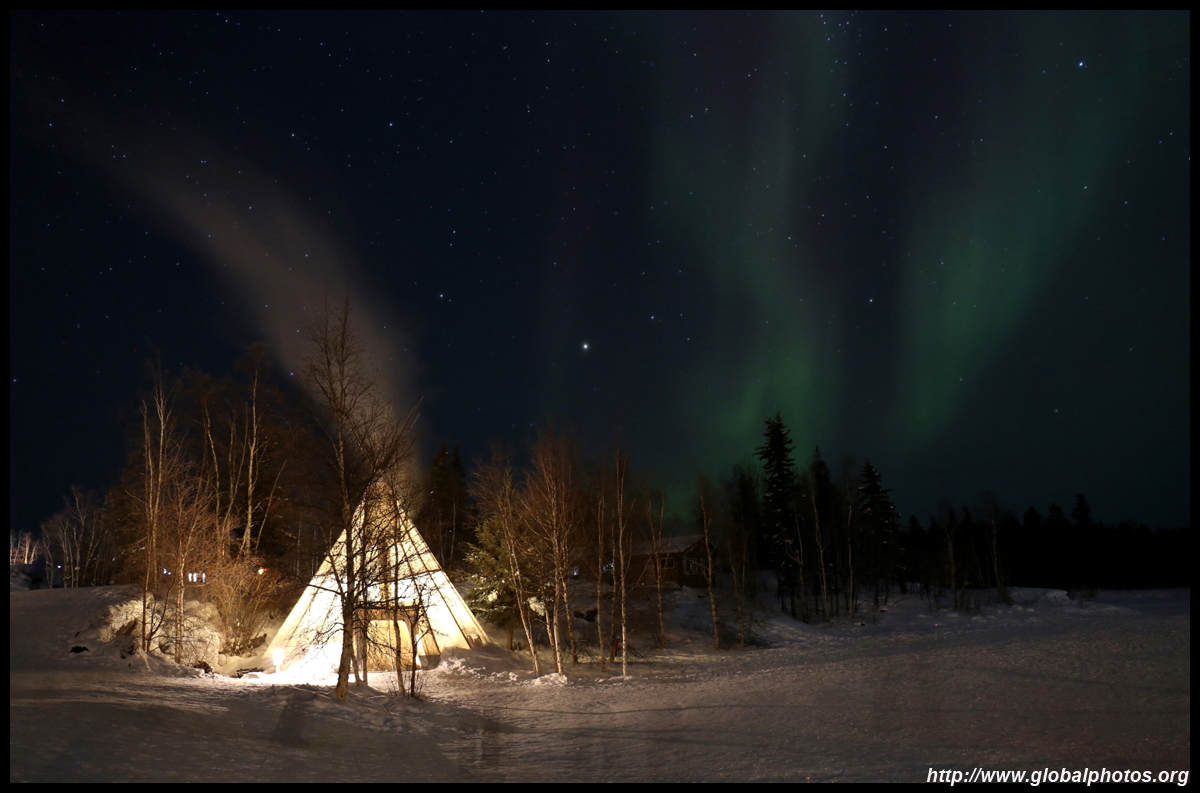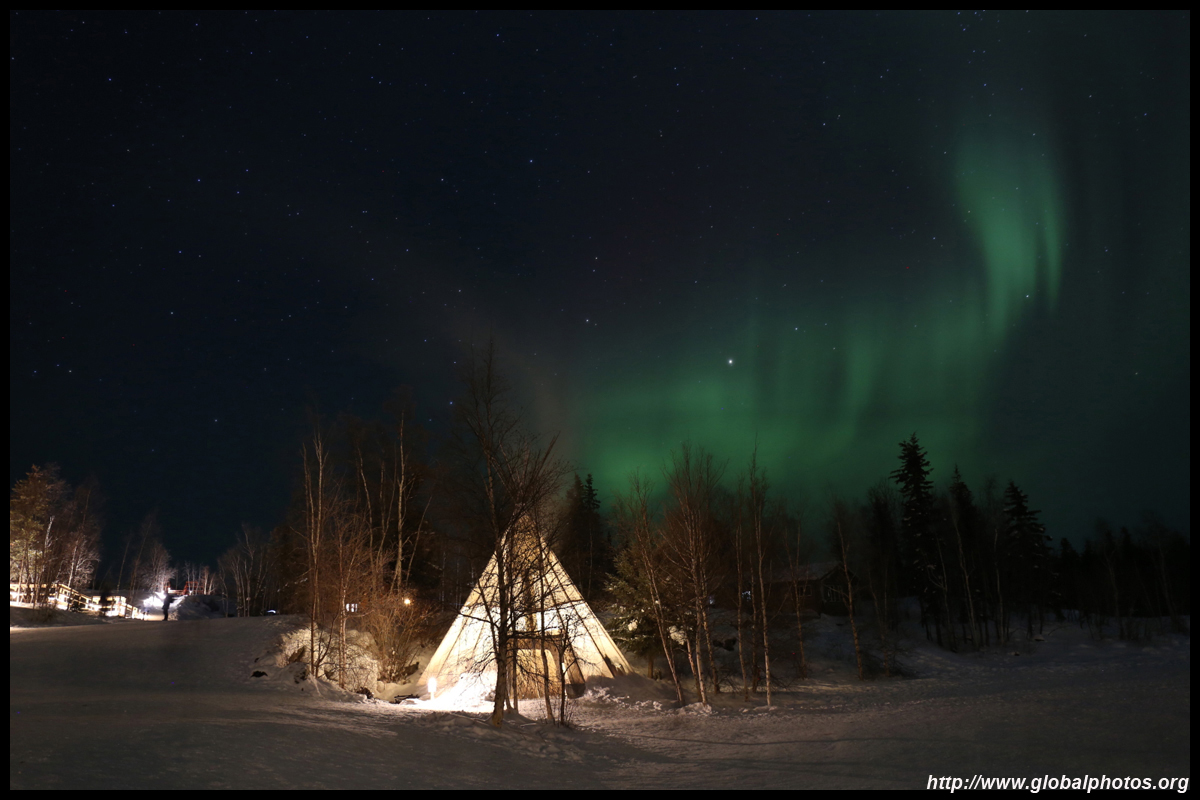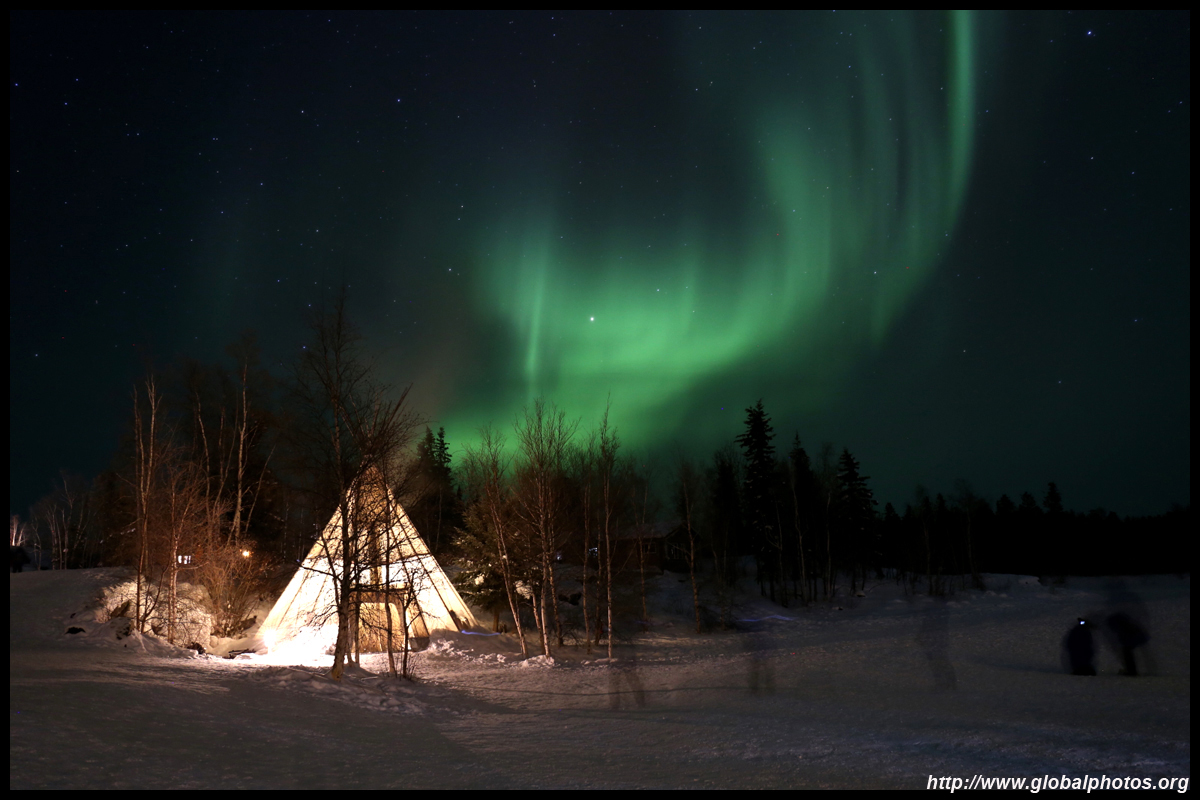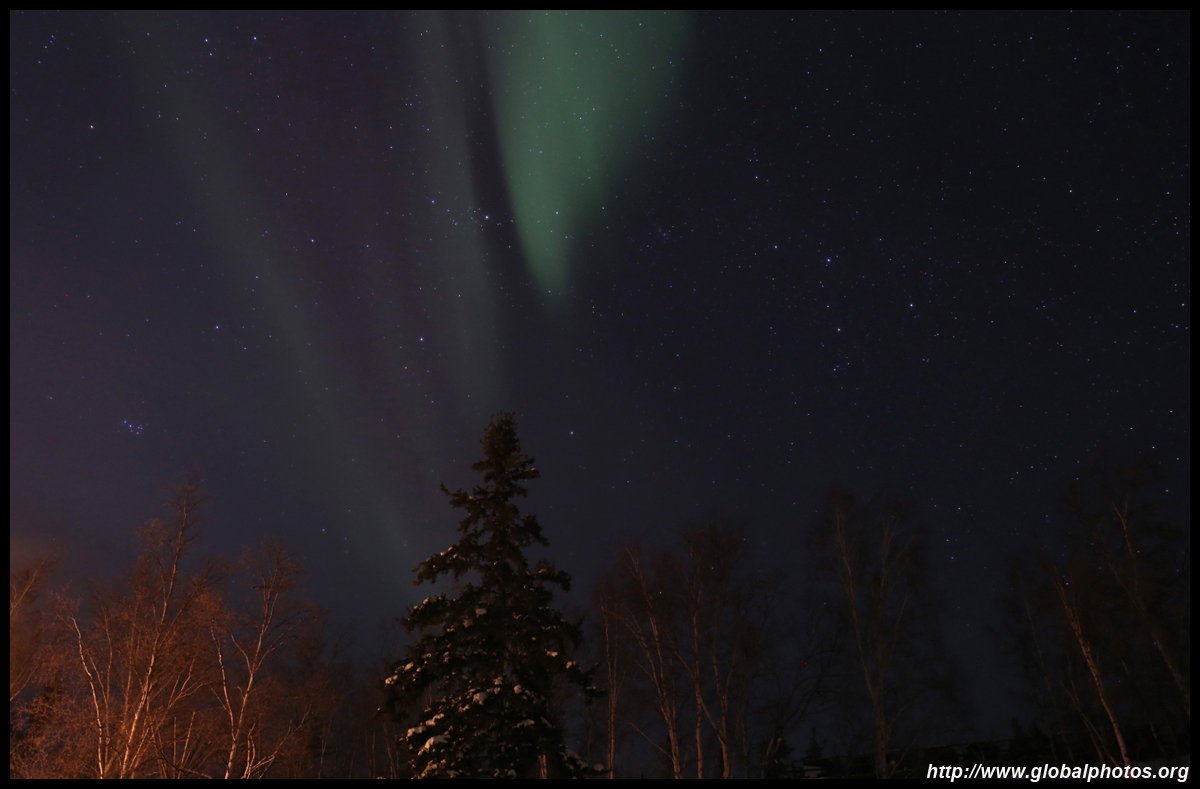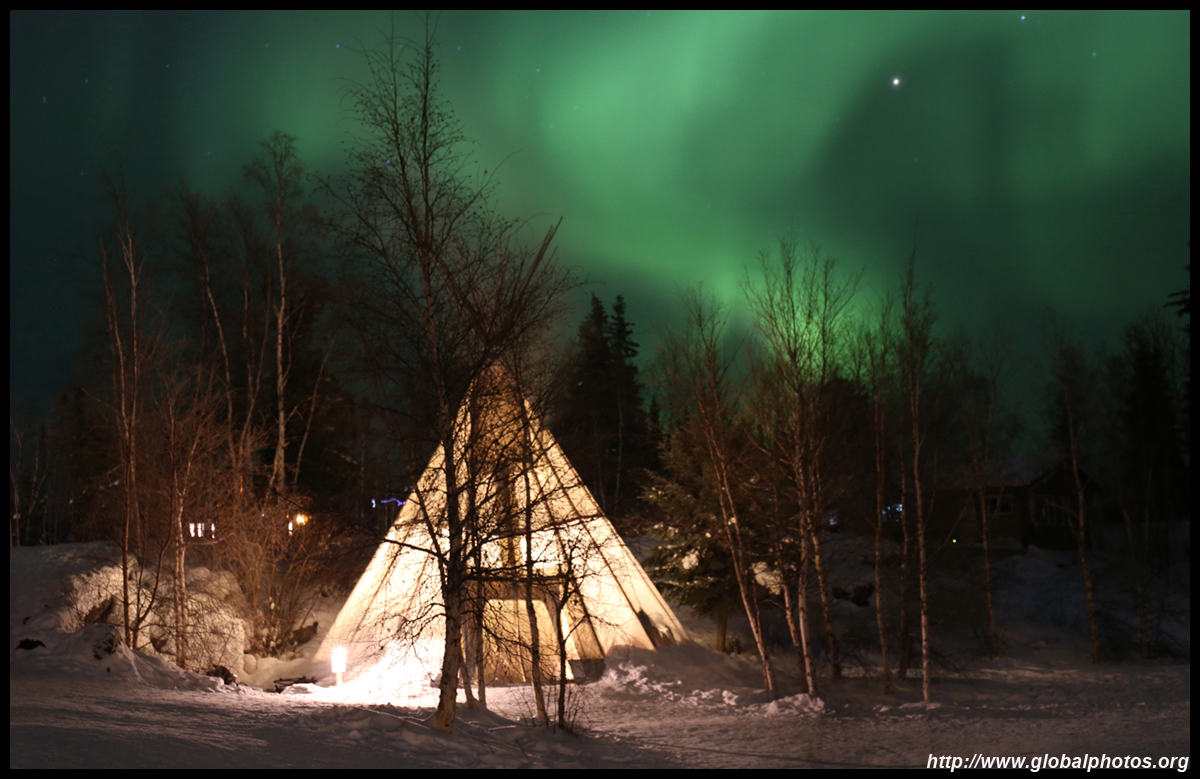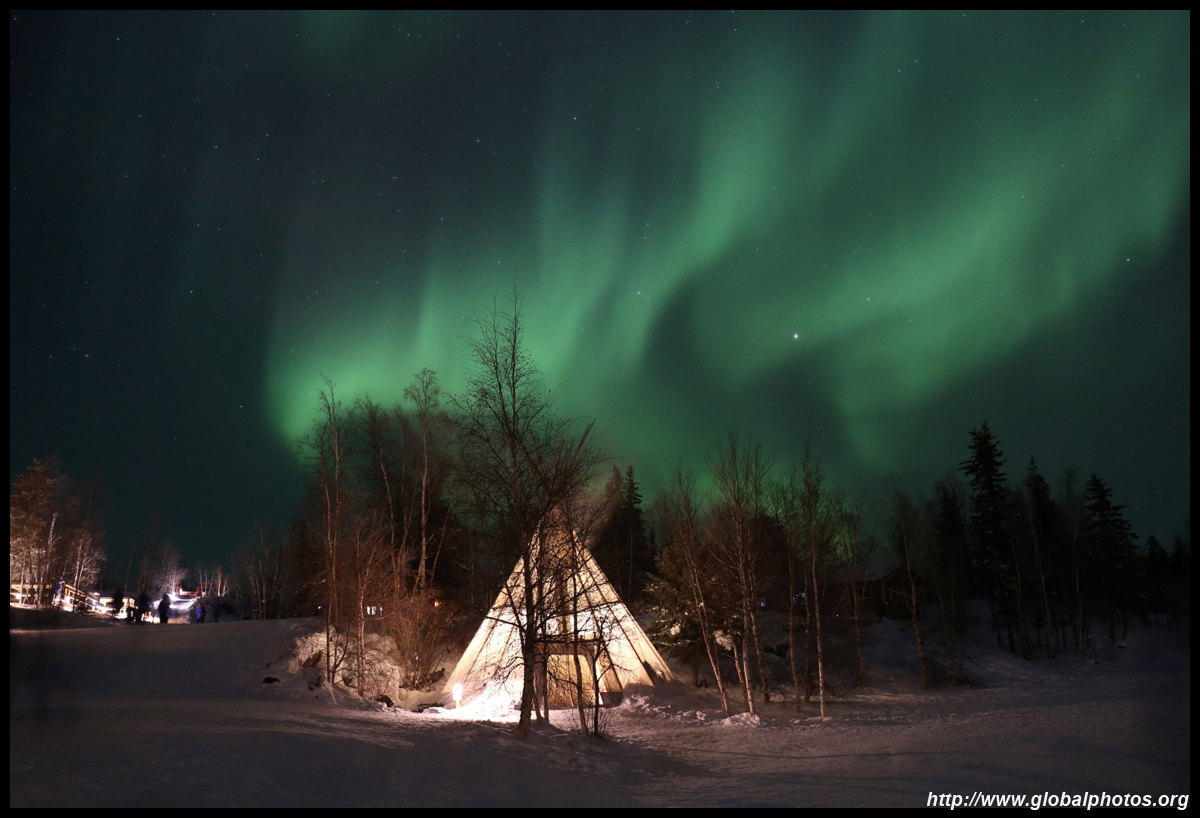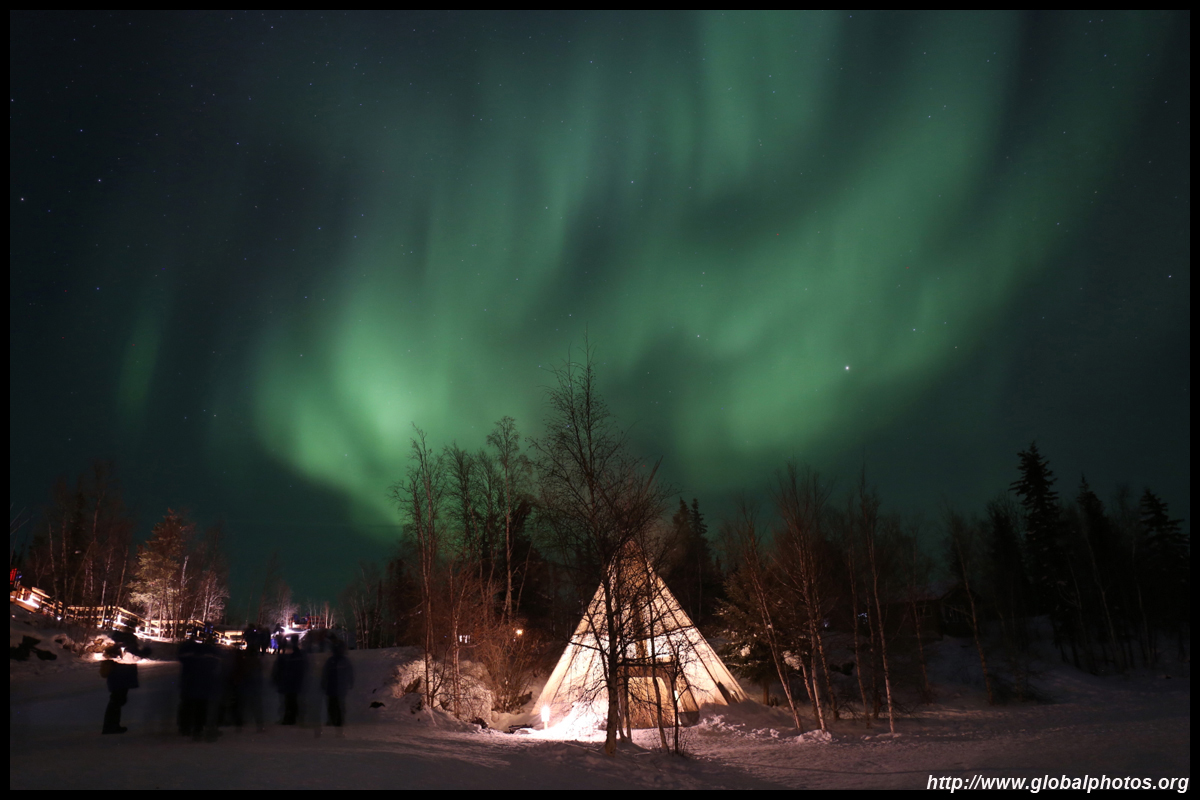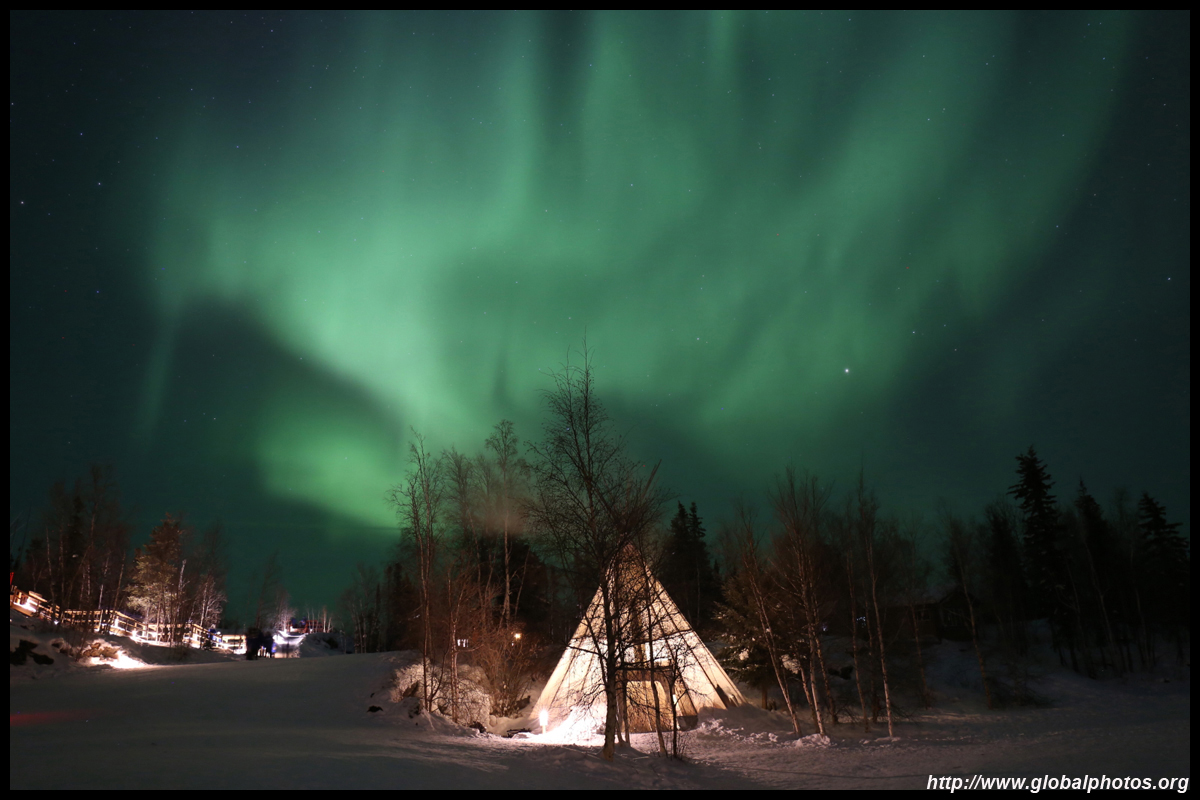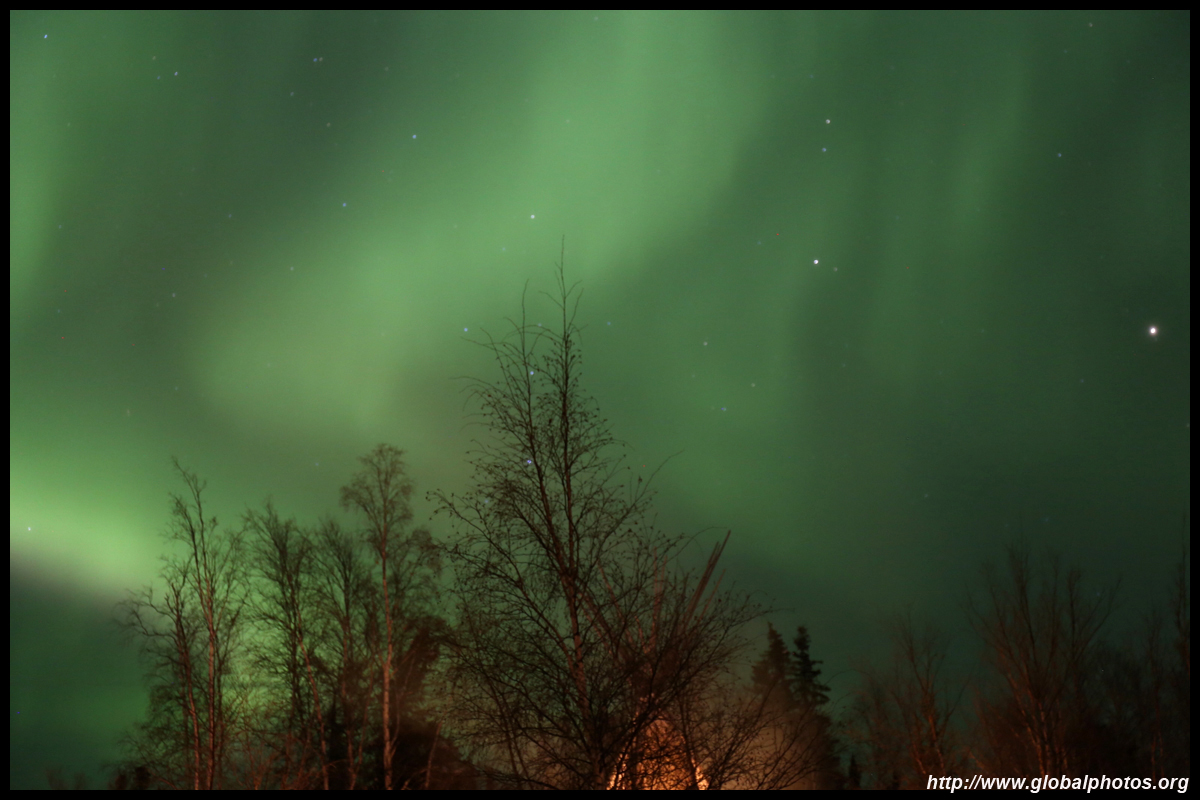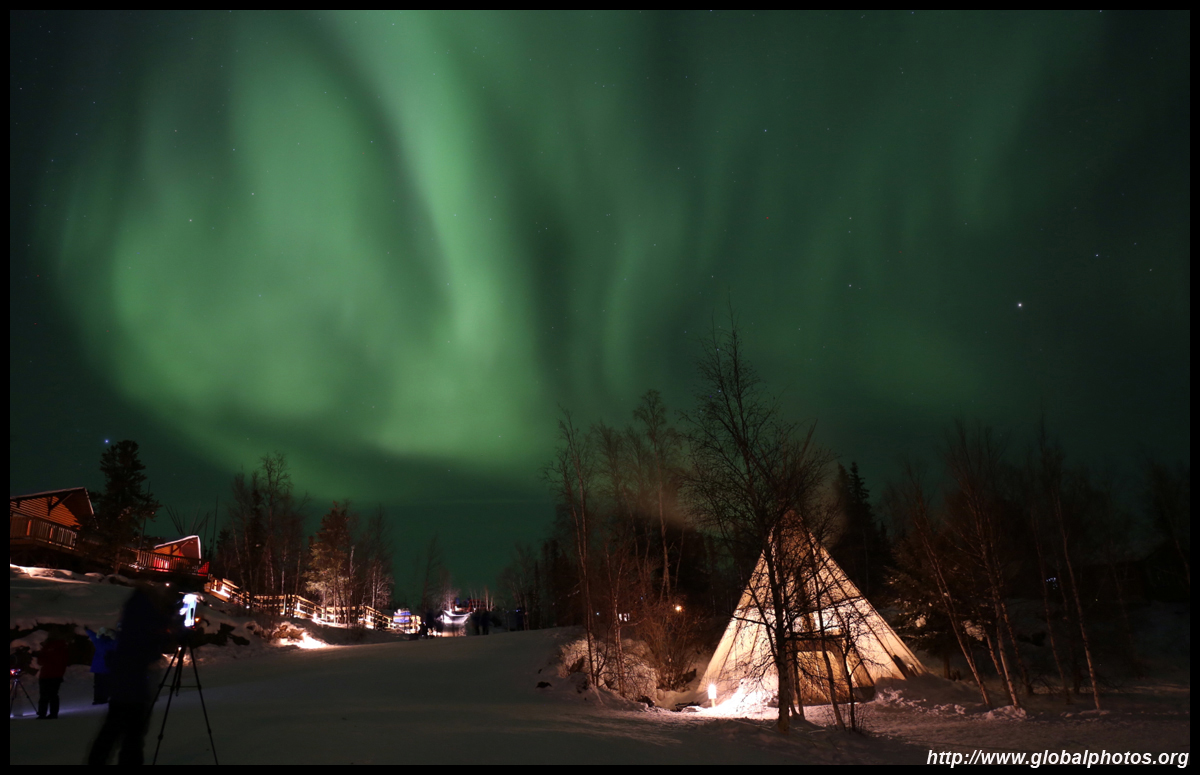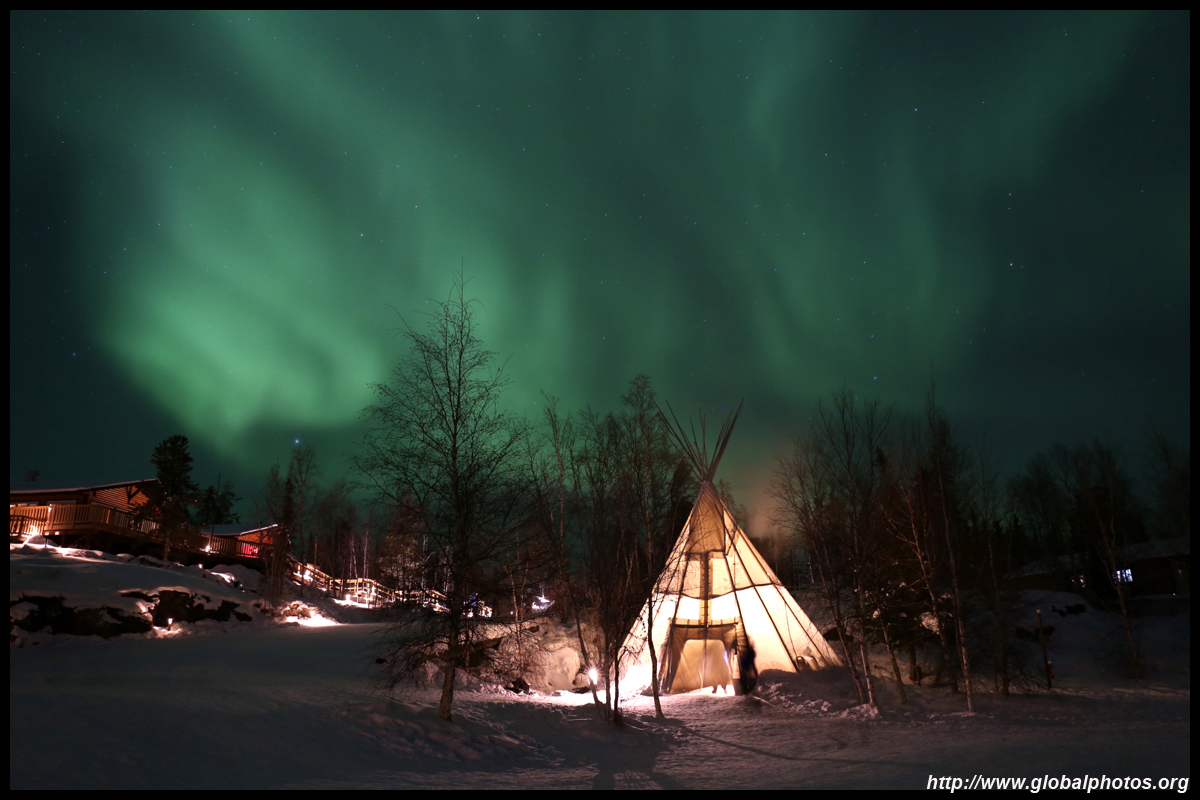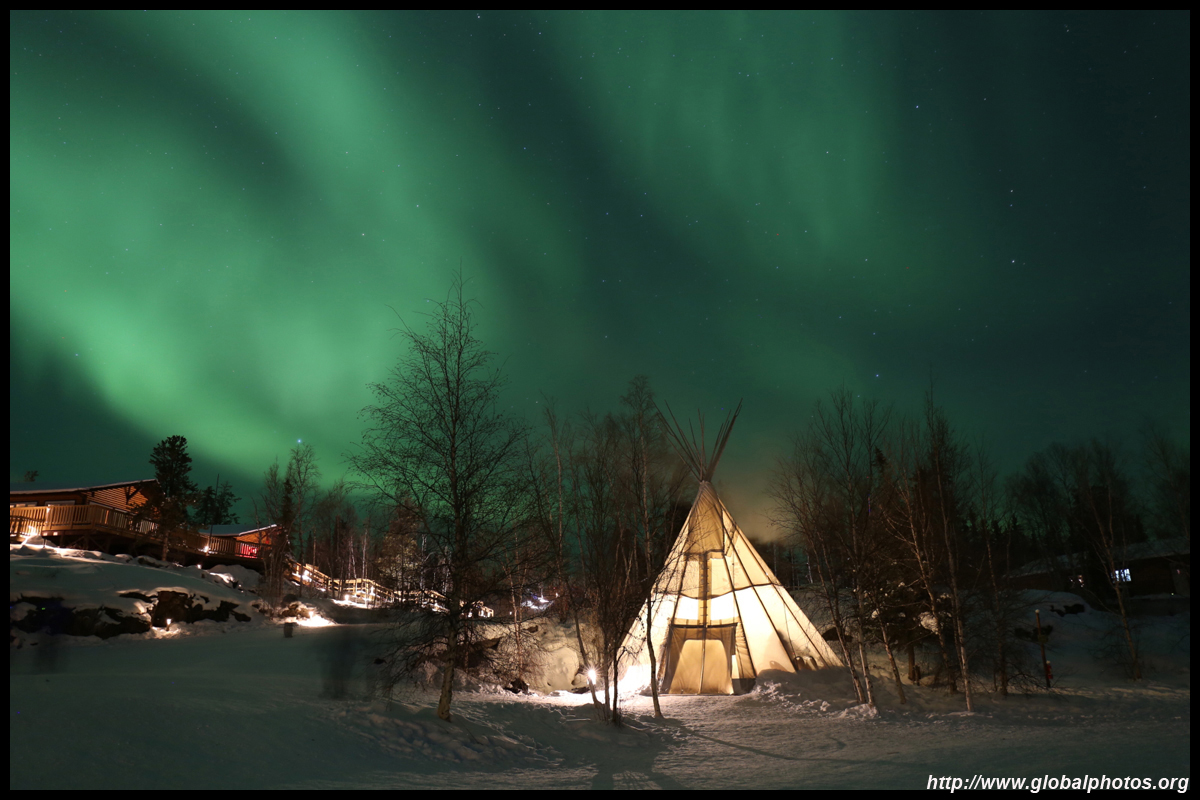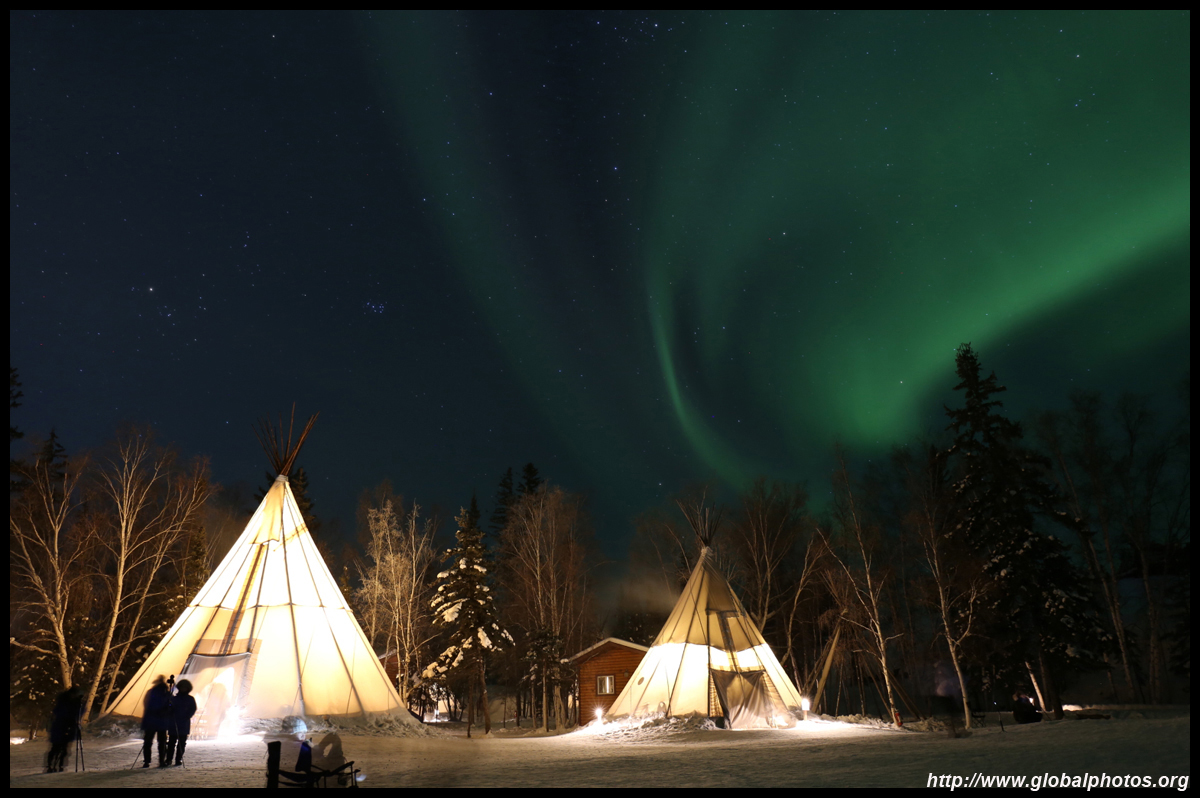
Yellowknife Aurora Borealis Photo Gallery
Many tour operators offer aurora hunting tours. Typically, visitors stay 3 nights in Yellowknife for the best likelihood of seeing the northern lights. You are at the mercy of Mother Nature so never plan too short a stay just in case the clouds and snow suddenly roll in. Rather than sticking to 1 operator going to the same location for all 3 nights, try different operators for a variety of spots and experiences.On this evening, I picked the aboriginal aurora viewing tour in Dettah, across the Great Slave Lake from Yellowknife. It includes a journey across the ice road and a short snowmobile ride to the Dene community. This is a smaller group tour with a nice heated cabin by the lake. Hot beverages, whitefish, and other snacks were served, and the aboriginals are very friendly and willing to share their way of life with you. There is 1 teepee by the lake, which has a big fire to cook the fresh whitefish.
While there were a lot of stars in the sky, it was not as spectacular as my visit to the Sahara Desert in Egypt.
After midnight, the guide came inside to call us out to see the start of the aurora show. She also gave tips on how to take photos as the aurora is not as visible to the naked eye as to the camera. As a general rule of thumb, turn off the image stabilizer and auto focus.
The aurora moves and is not necessarily visible in all directions. Looking back, Yellowknife's light pollution brightened the sky.
Then the skies exploded into a bright display, with the aurora even looking green to the eye.
The tourist information centre at City Hall provides maps in several languages, including Japanese and Chinese, on places you can drive to for aurora viewing if you don't join a local tour.
By now, the aurora was strong enough that even the light pollution part of the sky could not stop it.
With the lake being frozen over at this time of the year, you can barely tell apart which is land and which is water. I suppose the pier is a good indicator.
Thanks to a smaller group and a larger space, visitors would not bunch up together to enjoy this spectacular sight. The cabin in the background was not built for aurora tours, but is used by the community during the day.
The scheduled departure time was past 1:30am, when the snowmobiles were awaken to bring us back to the bus. By now, it was -31C but with the air being still, it didn't feel too bad.
$125 was worth the money. Aurora Village is a very organized site 40 minutes from the city. You are assigned a specific tent and the facility has a restaurant, gift shop, and heated washrooms. 300-400 people can be held within the tents at the same time so it can get crowded, and the odd bloke will flash a camera to blind you out. So grab a free lawn chair and walk further out to enjoy the aurora in slightly more serenity.
I spent 2 nights at this site, with the first night being disappointing at first due to an annoying light flurry and cloudy sky. It did clear out intermittenly after midnight and the aurora peeked through.
With the first night's photos being a bit disappointing, I returned for a second night with better knowledge of my camera settings.
At first, the aurora was sporadic and not too impressive. Patience is key.
If you don't walk out far enough, you will have plenty of shadows in your foreground. The village has a photography tent where experts will take your photo for an additional surcharge.
While everything was very organized, my biggest complaint was the early end time. We are requested to return to the tents for a 12:45am bus departure back to the city, but since the aurora seems to peak past midnight, this means paying an extra $25 to extend the stay for 90 minutes if the show goes on. Yellowknife has been advertised as the best place to see the northern lights. Aurora Village keeps a daily photo log of the show. Browsing through the photos, the probability of success is indeed quite high.
| |||
Yellowknife Main Page
Wallpaper of Canadian bank notes provided by : The Bank of Canada
